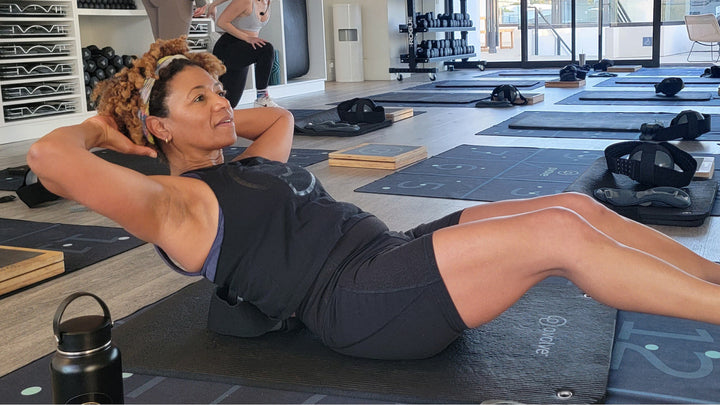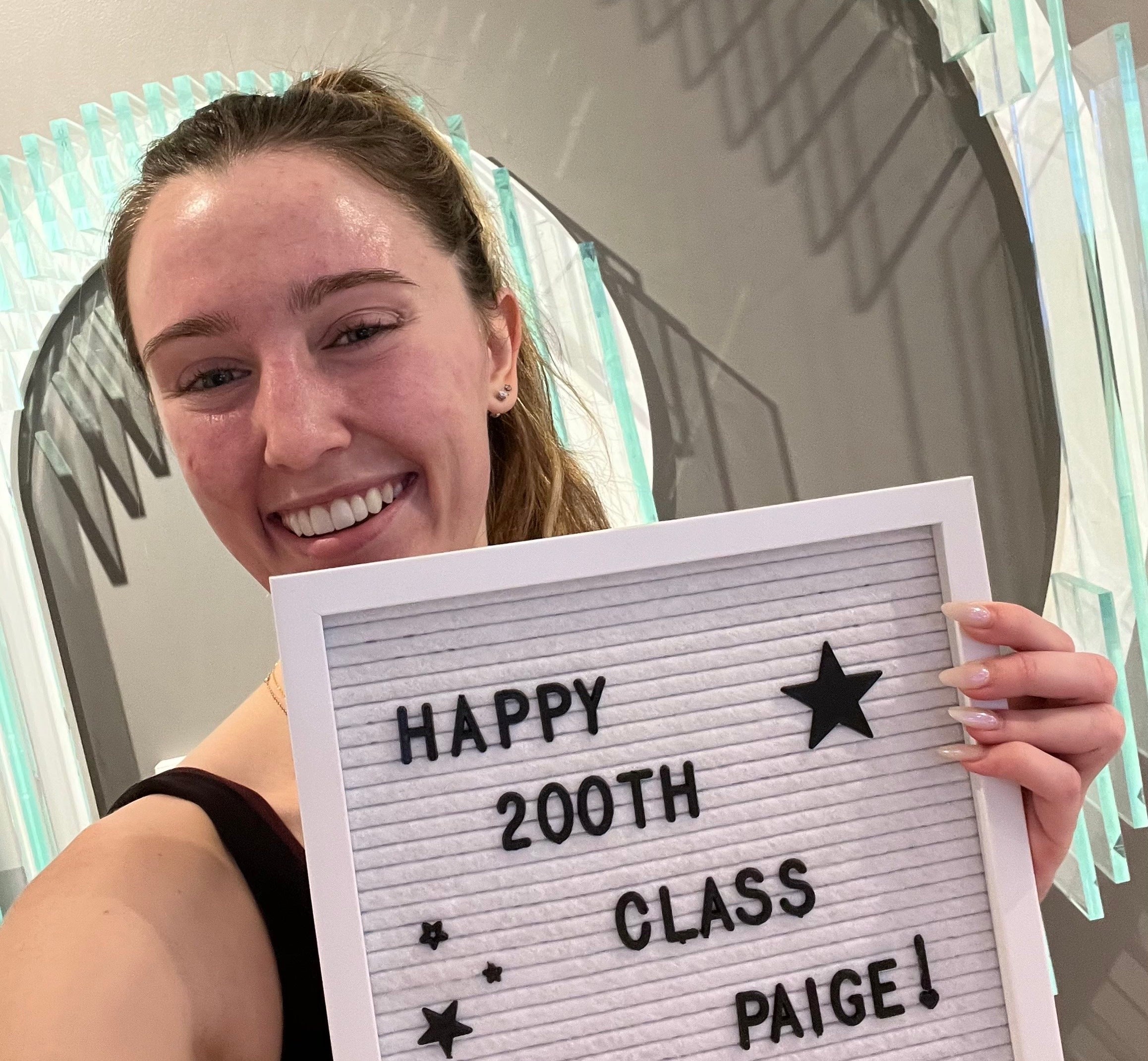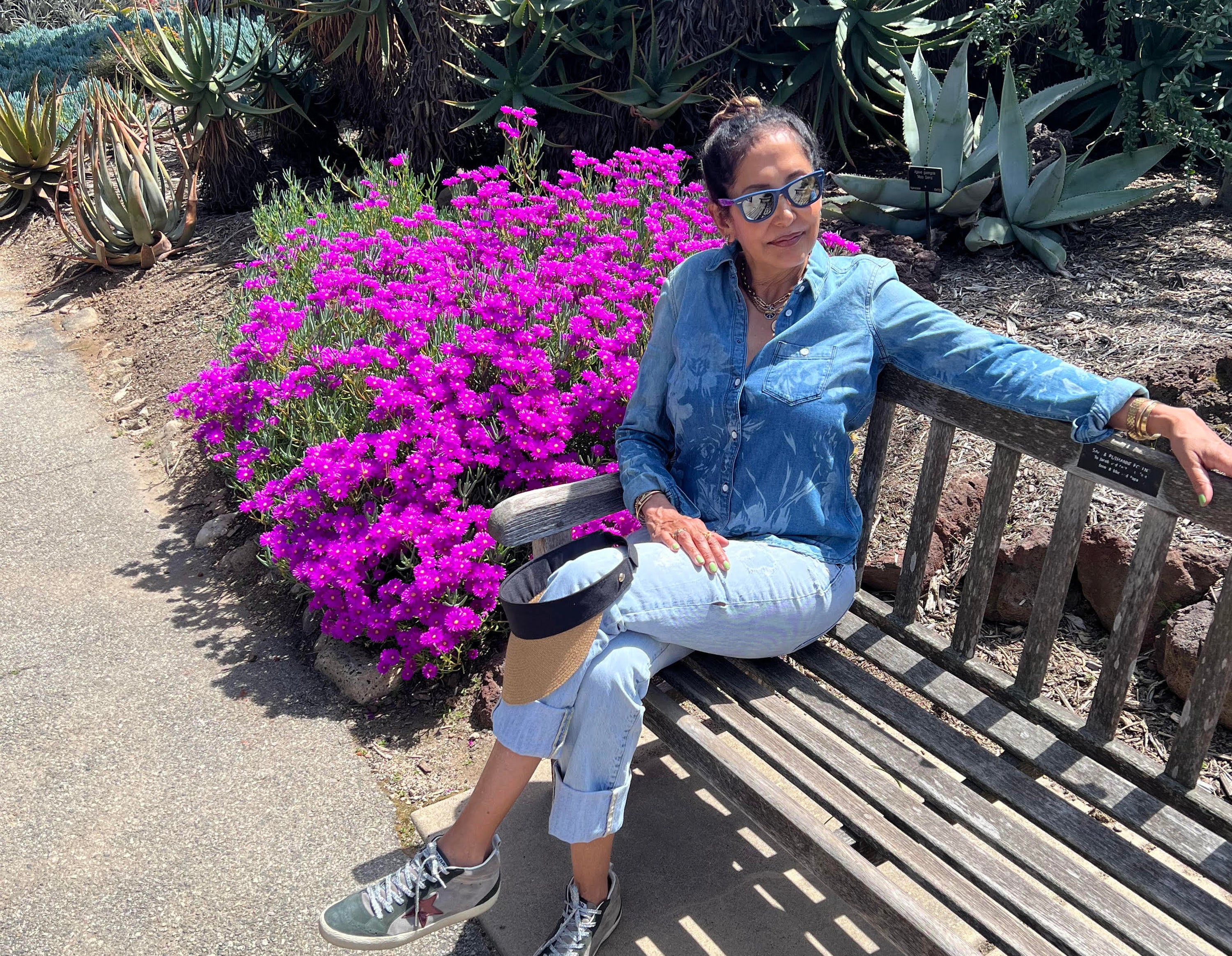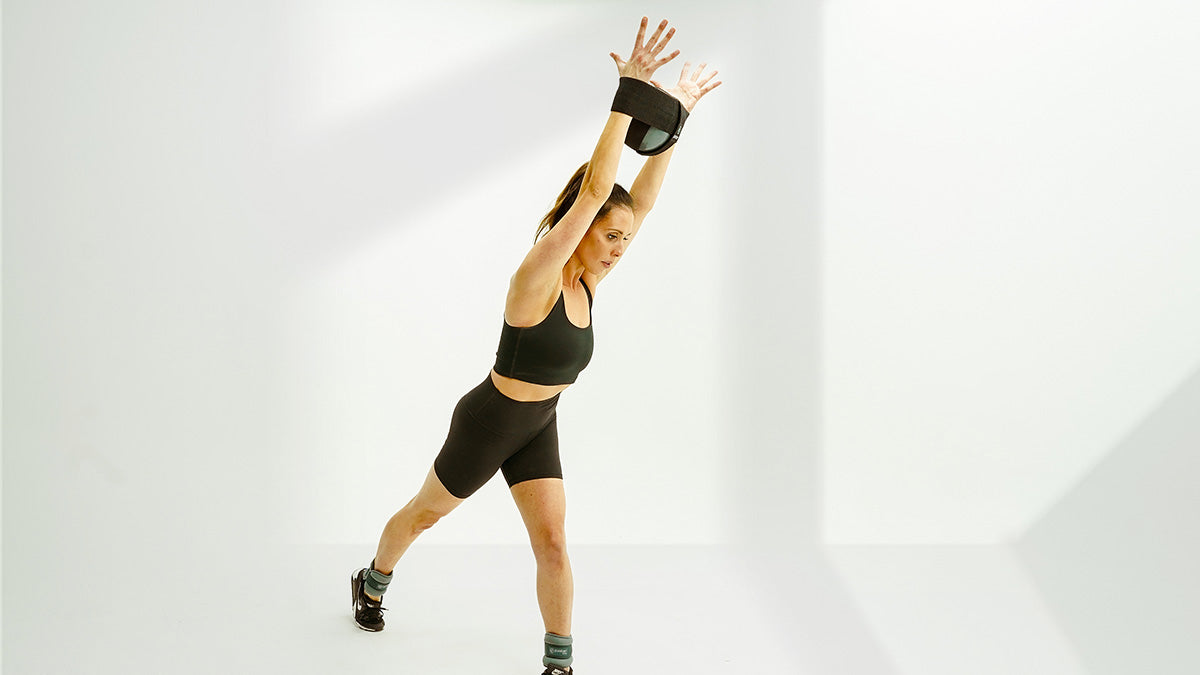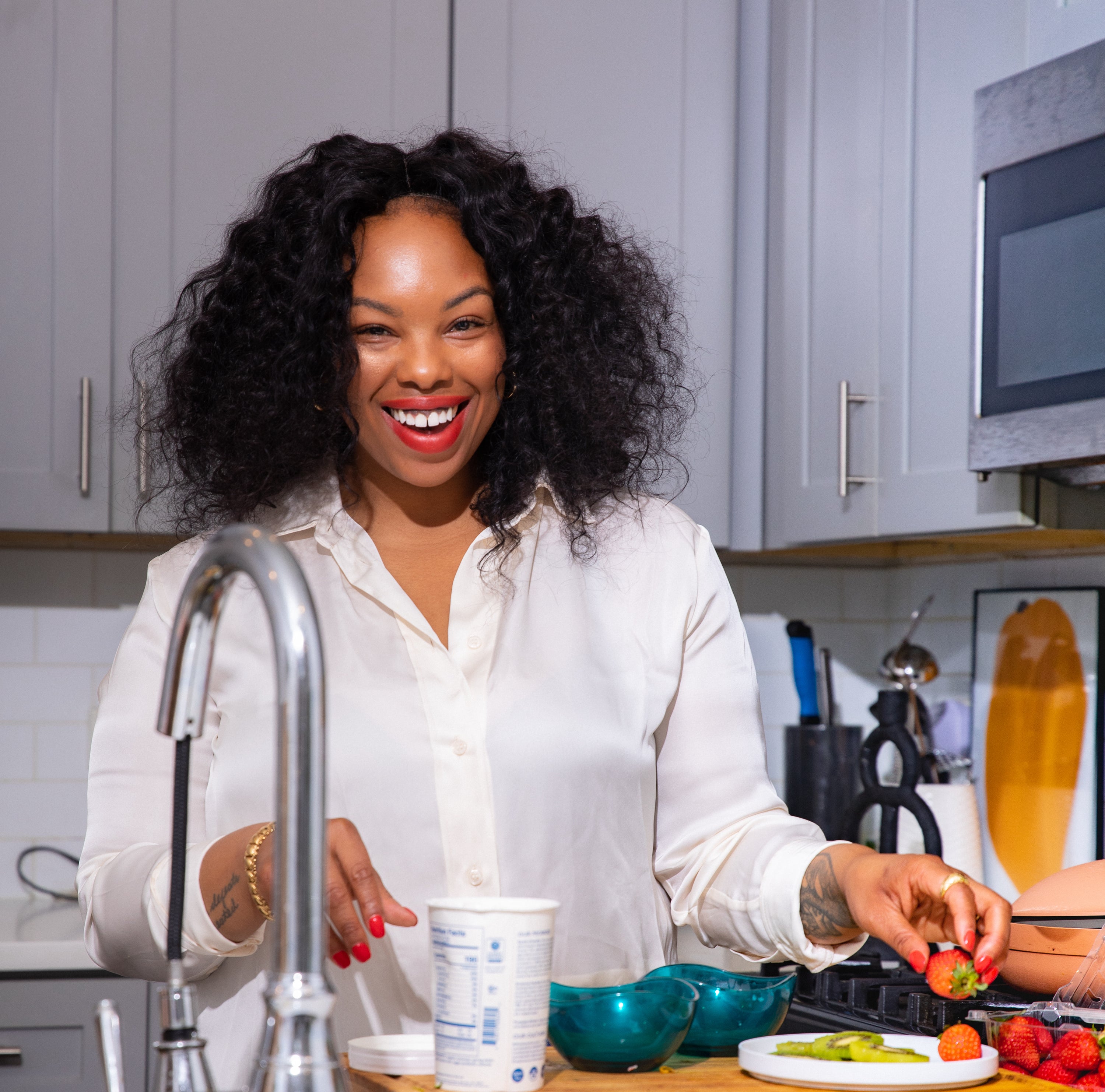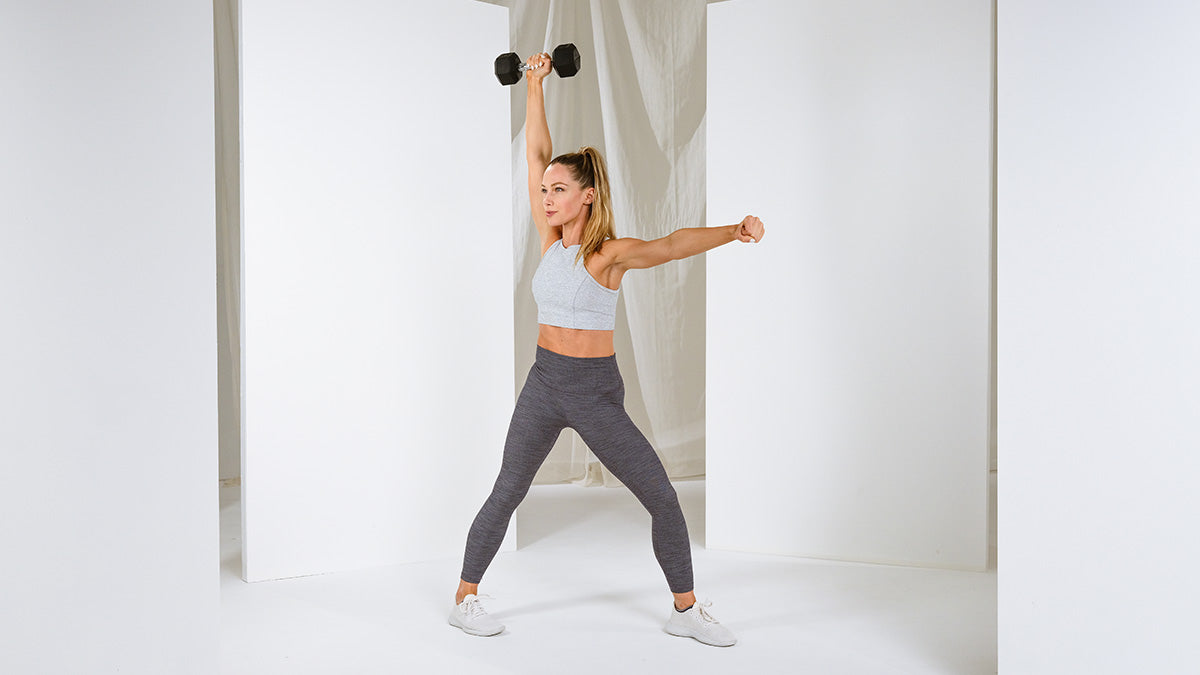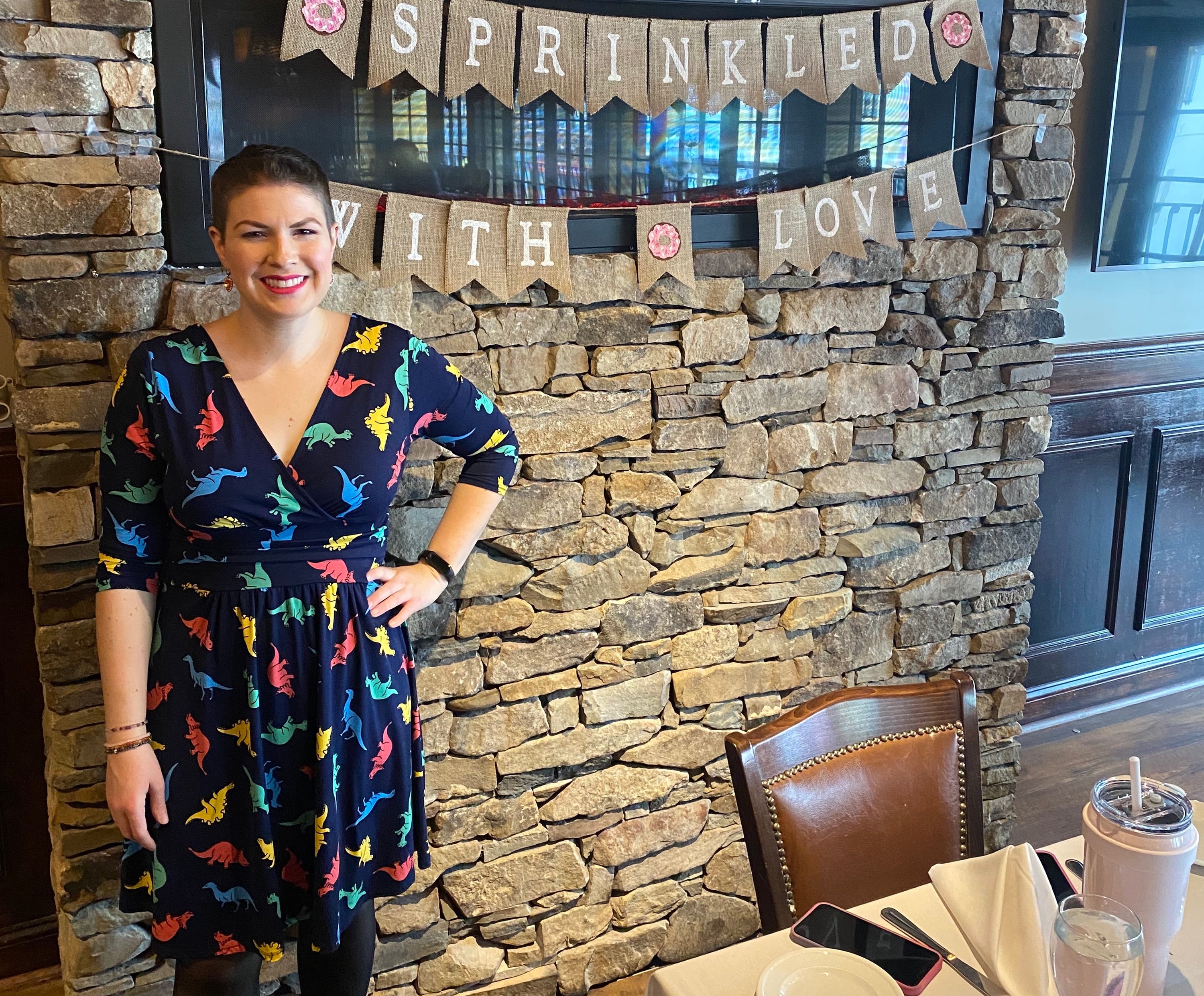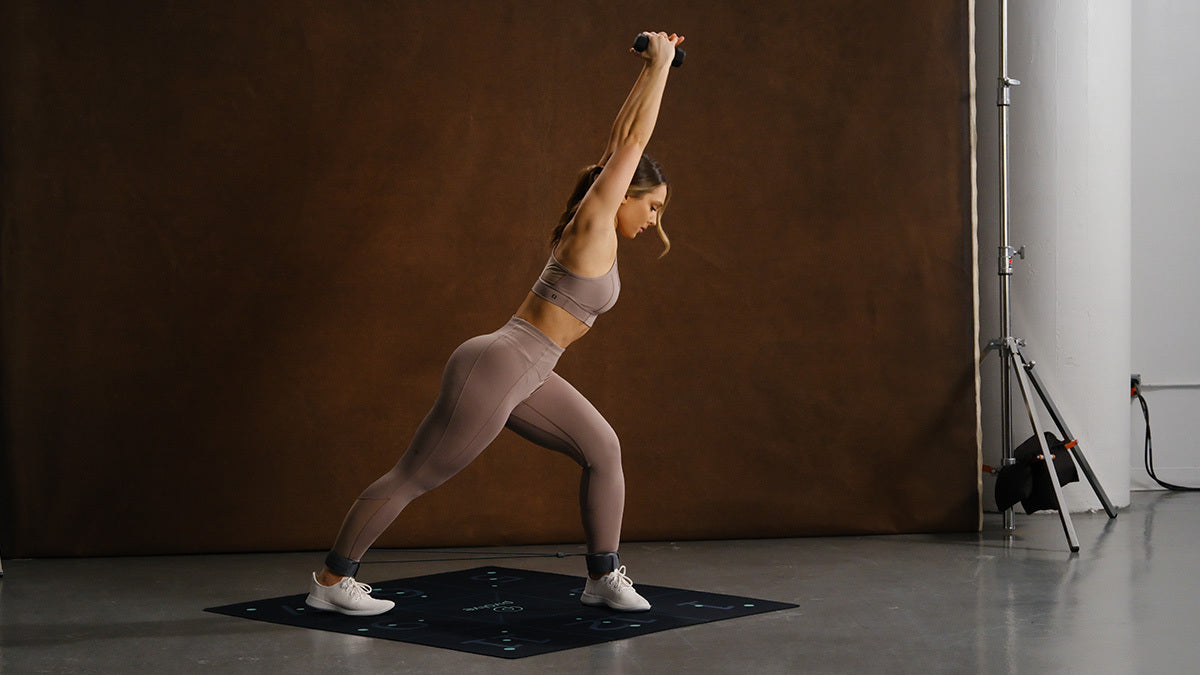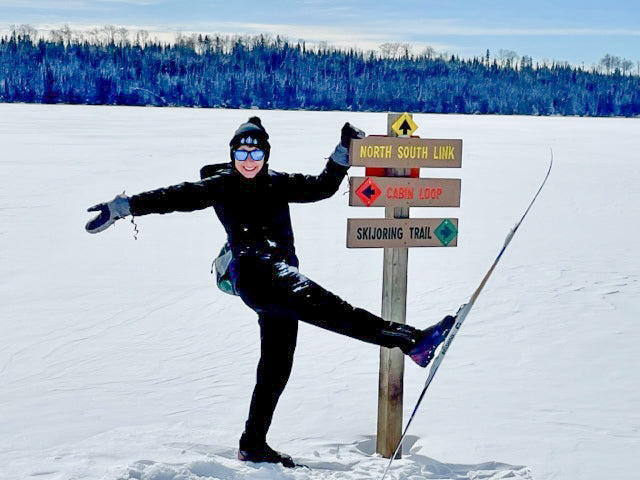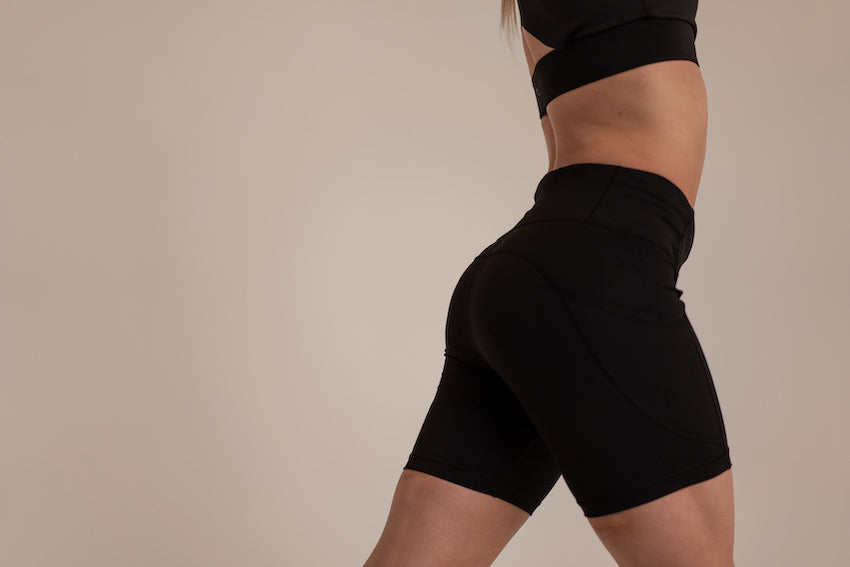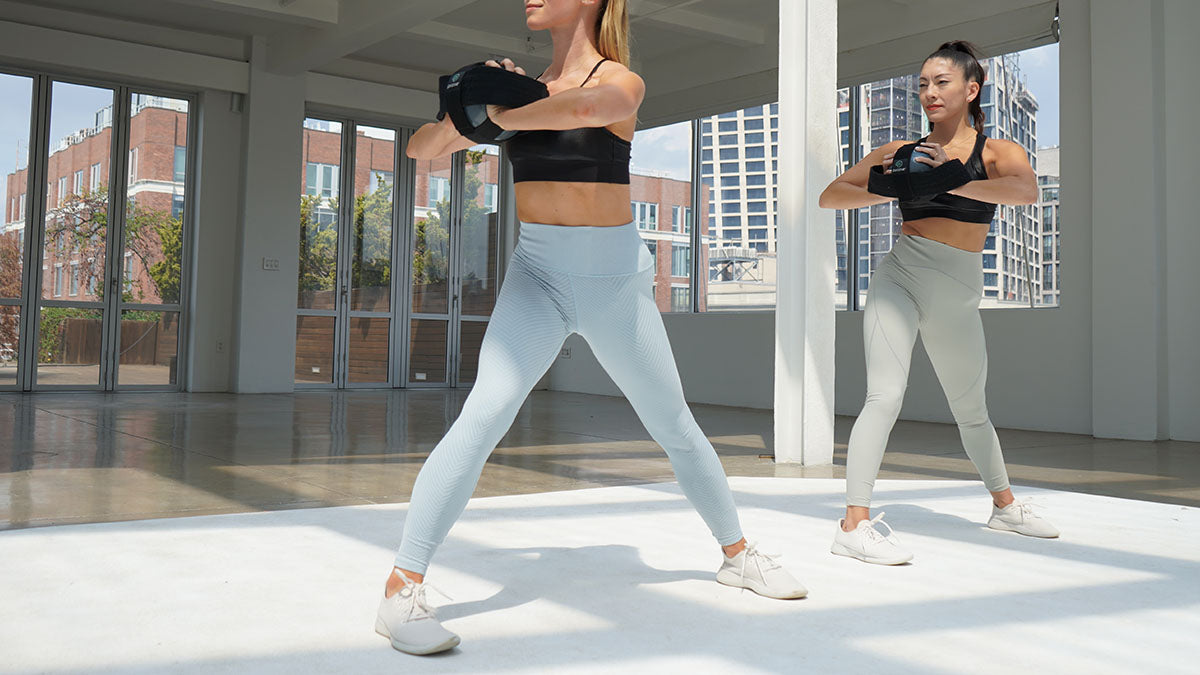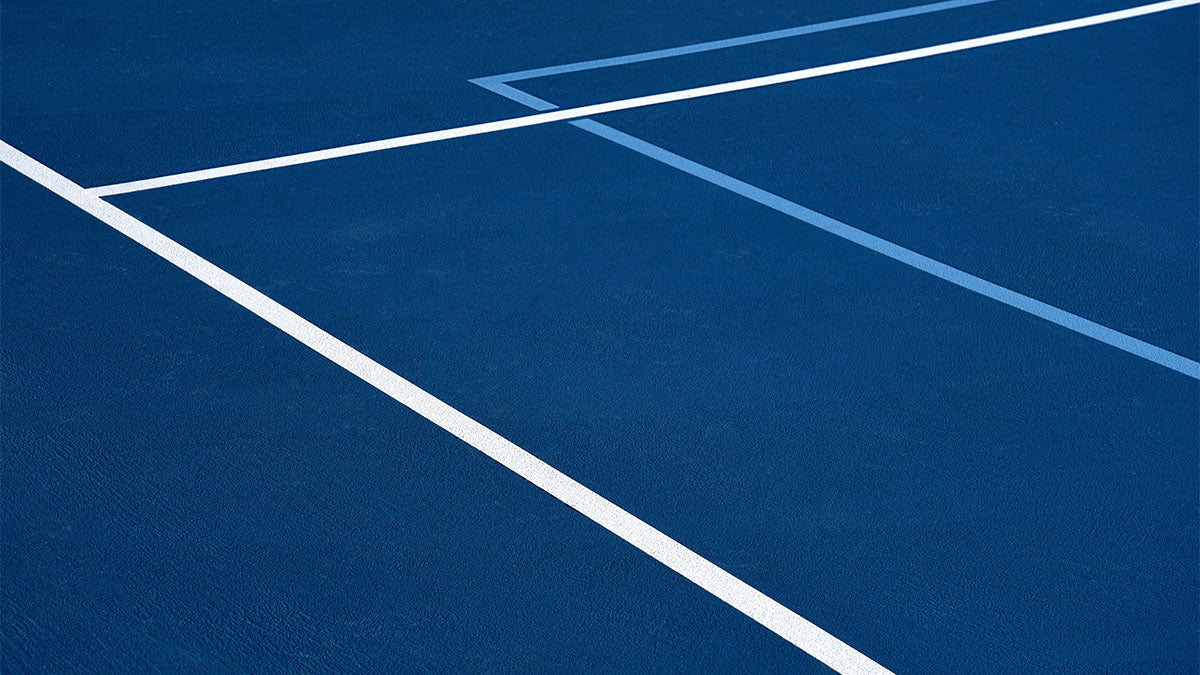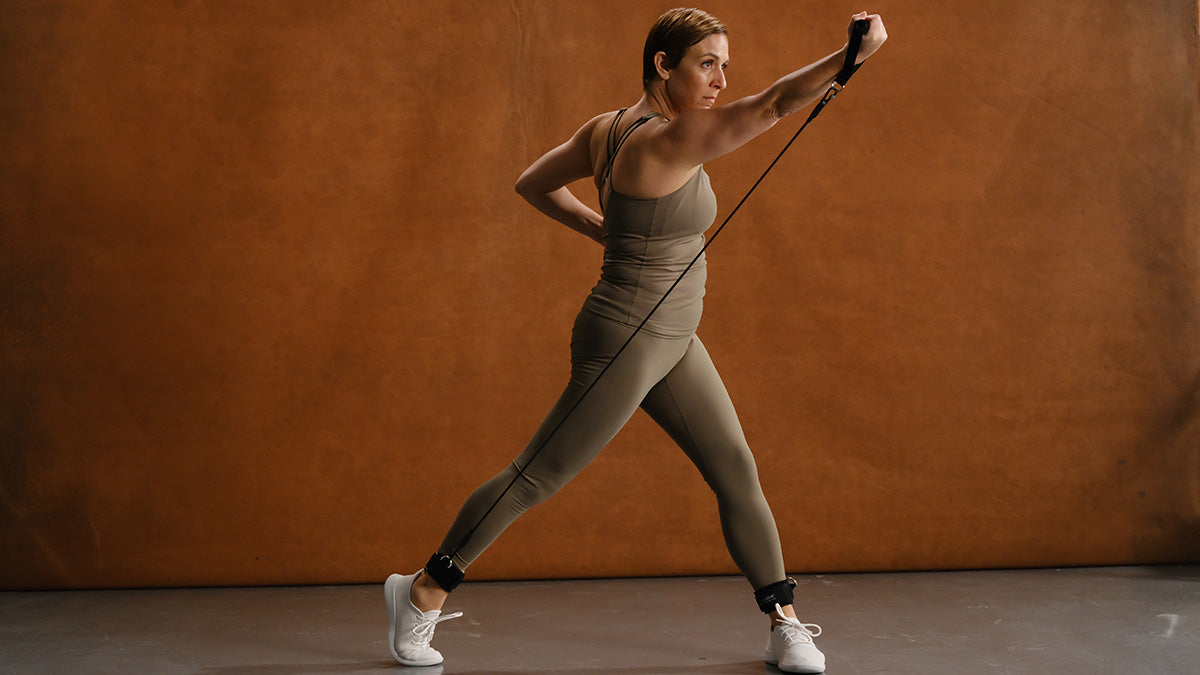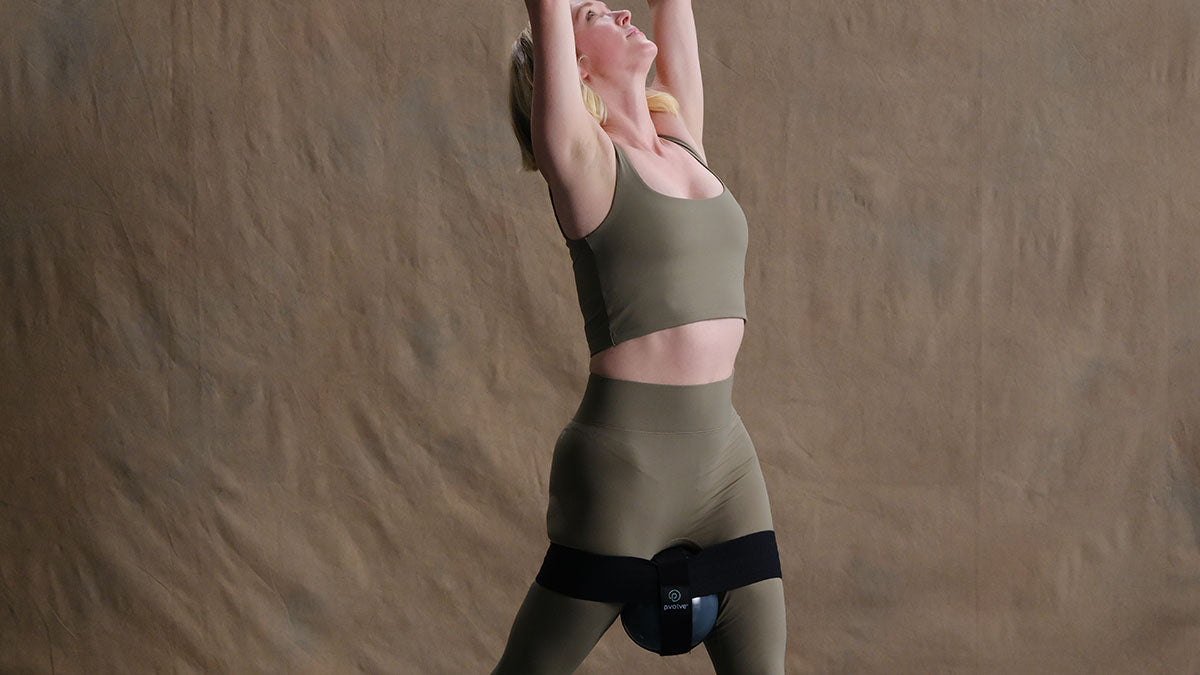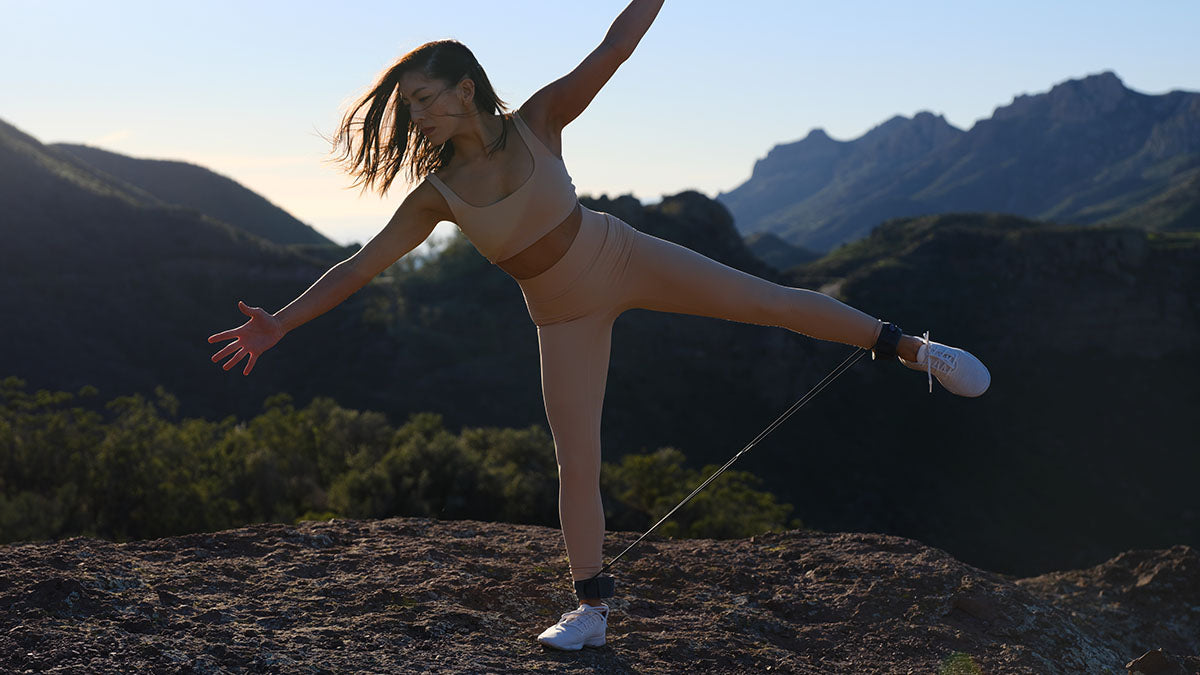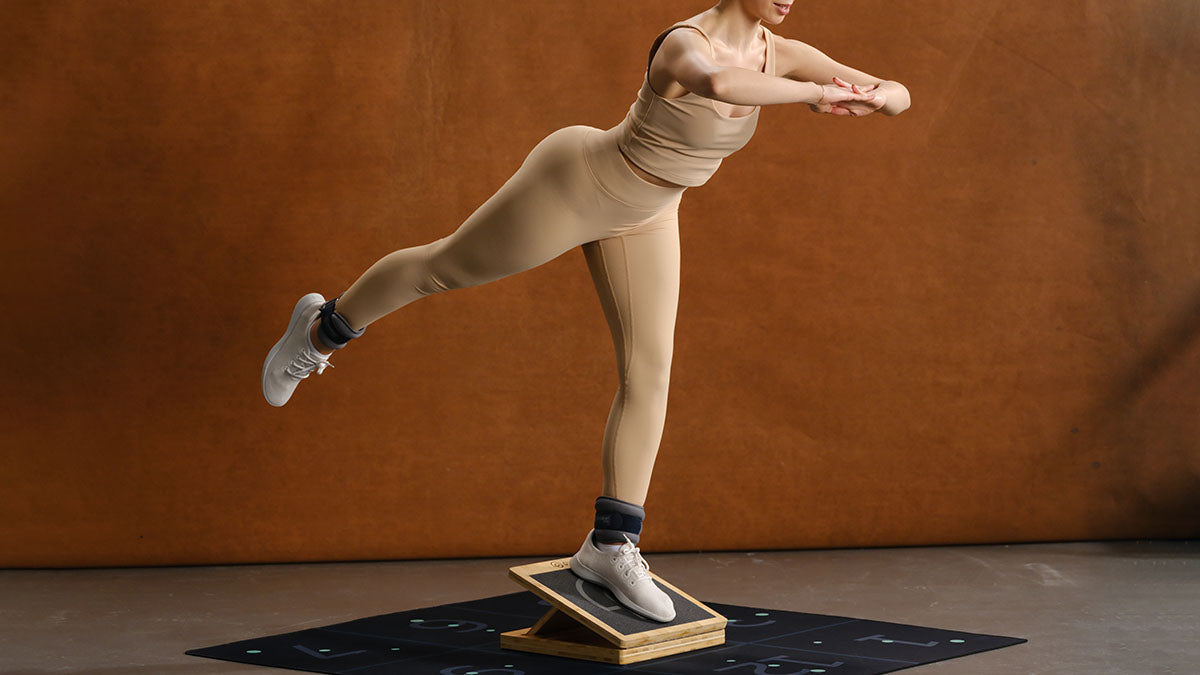-
Shop
SAVE UP TO $218 W/CODE FF15Shop Our Best-Selling Equipment + Streaming BundlesBundle and save on equipment plus streaming-the best way to experience the Pvolve Method at home. Not sure which bundle to get? Take our 2-minute quiz to find your perfect bundle.

- Learn
- at home
- in studio
- franchise
“With Pvolve, I’ll never reach a workout plateau again” - Deidra G
For Deidra G., 55, Pvolve started as a way to fill in a gap in her workout schedule, but three years later, she can’t imagine her life without the method—or the results it delivers. I’ve never had trouble finding ways to be active. Whether I was running, skiing, hiking, or going to the gym, I have always made working out a priority. But when the pandemic happened, even the hiking trails near me in Los Angeles closed. For the first time, I found myself searching for ways to stay fit. Then, I came across an ad for Pvolve online one day. The movements looked interesting and completely different from any other exercise I had tried, and since the classes were online, I could work out at home. Better yet, they were offering a discount for medical care workers (I work in radiology). I decided to go all in, and invested in a starter package that included hand weights, ankle bands, and the P.ball. Healthy movement I began with routines that focused on Pvolve’s foundational moves, and was impressed that the workouts helped improve strength, mobility, and flexibility. None of my other workouts ever touched on all three! I was also pleased to learn that Pvolve’s exercises focus on strengthening the pelvic floor. At work, I often see patients who are dealing with pelvic floor issues, so I understand how important it is not to neglect it. Contagious energy Once I was ready, I challenged myself with some of the more advanced online classes and Dani Coleman quickly become one of my favorite trainers. Her energy is amazing! Then, when the West Hollywood studio opened up not too far away from where I lived, I decided to try an in-person class. I couldn’t believe it when I saw Dani leading the class! I enjoyed her in-person workout even more than the ones I tried at home. She is so good at pushing you and suggesting little tweaks that take your workout to the next level. I left class drenched in sweat and feeling totally invigorated. That’s the moment I realized I never wanted to stop doing Pvolve. A new level of fitness These days, I make time for some of my other favorite workouts, like running, but Pvolve is my number one. I go to a studio class about six times a month, and have never felt stronger. From my arms to my core to my glutes, I see more tone and definition—and considering the compliments I get, other people must as well. I credit some of this to the fact that Pvolve’s routines fire up muscles in my body that were previously ignored with my other workouts. Not only does this added strength give me extra power and stability when I run or ski, but it’s also helped at work. My job is physically demanding—there’s a lot of twisting, turning, and reaching over patients—and over the years, it’s taken a toll on my body. But Pvolve’s functional fitness routines have taught me how to move in a more mindful way that works with my body instead of against it. Studio love I recently moved to another neighborhood in Los Angeles, and my first thought was, “am I still going to be able to make it to the Pvolve studio?” But the answer was 100% yes. I love and need this workout, and it’s absolutely worth the 40-minute drive from my new home to the studio. I truly never regret going. Whether I’m taking a class with Dani or another trainer, the energy is unbeatable and the encouragement I get motivates me to push myself a little bit more each time. With other workouts, I’ve often experienced plateaus or found that the moves become less challenging over time, but that’s never the case with Pvolve. There’s always a new goal to reach and new moves to master, and even three years later, I feel the same way I did after my first studio class: I never want to stop doing this workout! 5 of my Pvolve highlights 1. Finding my balance I was so intimidated by using the Slant Board at first, but balance is so important—especially as we get older—so I kept at it. Now the Slant Board is one of my favorite pieces of Pvolve equipment! 2. Improving my running Pvolve has helped me excel at other workouts, too—especially running. My legs are stronger than they have ever been. 3. Discovering new faves I love the Pvolve merch! Equipment, tees, sweatshirts, I have it all. And after a sweaty session, I like to replenish with Pvolve’s Recover 9 supplement. 4. Strengthening everything Because I work in the medical field, I often see patients who are dealing with pelvic floor issues. So I was thrilled to find out that the Pvolve Method targets and strengthens this often ignored area of the body. 5. Going the distance I don’t think twice about driving 40 minutes to the closest Pvolve studio. Nothing could replace these workouts—or the energy and motivation—that the trainers bring to class.
“My best gains aren’t the ones you can see” - Paige A
After years of working out for aesthetic reasons, Paige A., 24, was introduced to Pvolve and experienced a transformational shift in her exercise mindset. I’m not one to sit still. Physically and mentally, I’m extremely restless. As a kid growing up in Florida, I rode horses competitively, danced for school, and was involved in other activities that got me outside. And during my college years in Nashville, you could often find me working out at the gym with my roommate. After graduating, I relocated to New York City for work. The move took some adjustment. Because I don’t have a car, I wasn’t able to get out of the city to find ways to get active and sweat away stress. I felt extremely isolated, and thought that maybe I wasn’t cut out to live in New York. Then I stumbled upon Pvolve on the ClassPass app—and it changed everything. Making new moves My first class was at Pvolve’s Soho studio with Mel. The room was packed and full of energy, but when I heard Mel toss out Pvolve terminology (“internal rotation,” external rotation,” “stagger”), I thought I’d never be able to follow along. I was accustomed to taking classes where instructors called out moves without much explanation, forcing me to look around and attempt to mirror other people in order to keep up. Pvolve was nothing like that. Mel took the time to walk around the class, correct form in an encouraging way, and offer tips on how to get more out of a move. I wouldn’t say that I perfected my internal and external rotations that day, but I started to get the hang of the method! At the end of my first week, I knew I had to get a membership. Discovering my core I became a regular at the Soho studio, and quickly learned that I had been going about strength training the wrong way. Before Pvolve, I relied mostly on my legs and arms to power my workouts, and I thought that by wearing out the muscles I used the most, I could build strength and stamina. Pvolve taught me that strengthening my whole body allows me to use every muscle more effectively—and all of that starts by tapping into my core muscles. Now when I go to lift something heavy, for example, I make sure that the motion originates from my core. When my mind and core work together, I can truly do so much. I surprise myself with my own strength! Adopting a new workout “why” When I exercised at the gym during college, the focus was always on how I looked. To be honest, I never enjoyed those workouts, and they didn’t feel great on my body either. But I thought that was what I had to go through in order to get a “summer body” (whatever that is). But near the beginning of my Pvolve journey, a trainer asked me what my goals were, and that question helped shift the way I think about my workouts. It made me consider what else I could aspire to, like being able to improve my balance or pushing myself a little bit harder. Of course, I’m still proud of my new muscles, but I no longer judge my progress by what I see in the mirror. Instead, I aim to do a little bit better than I did the day before. It’s been a transformational mindset shift, and I’m proud of that! Finding a home away from home These days, I try to go to a Pvolve class seven days a week, and each time, I’m so happy to be there. If I start my morning at the studio, I know it's going to be an amazing day, and if I end my day at the studio, I know I’ll go to sleep feeling so accomplished. I leave feeling a million times better than when I came in—every time. It’s wild to think that a year ago, I was convinced I was ready to leave New York City and move back to Nashville. Pvolve—and the studio community—gave me a reason to stay. From the trainers to the other students, everyone is so supportive. We cheer each other on as we work toward our fitness goals, and celebrate wins and highlights outside of the studio, like birthdays, promotions, and engagements. I’m part of a community, not just another membership number at a gym, and I truly feel lucky to know and work out with this one-of-a-kind group of people. 5 of my Pvolve highlights 1. Feeling challenged, every time Each Pvolve class provides another way to push myself and work on my strength and mobility. The workouts are always evolving, which means I never peak or get bored. 2. Discovering nonstop support The Pvolve trainers are with me every single step of the way and are dedicated to supporting my goals and helping me achieve them. 3. Focusing on me—and only me I no longer look around the room and compare myself to others or worry about what I look like to other people. Instead, I’m laser focussed on my own progress and how I can push myself a bit more than I did the day before. 4. Learning how to use my core Pvolve taught me how to pull strength and stability from different parts of my body, including my core muscles. I remember the first time I saw this pay off when completing a challenging balance exercise—it was so cool! 5. Ditching my “summer body” mindset I used to exercise for aesthetic reasons, but Pvolve helped me realize there’s so much more to working out than what I see in the mirror.
“Pvolve helps me live a stronger, more fulfilling life”- Nicolette C
Nicolette C. knows that getting older doesn’t have to mean losing your strength. At 69, she’s achieving new workout goals—and inspiring others along the way. I’ll blow out 70 candles on my next birthday cake, so for me, exercise is about so much more than getting in shape for a selfie. I work out to strengthen my body so that I can continue to live an active, independent life. When a former barre instructor pointed me to Pvolve, I was intrigued by their approach to functional movement. The exercises promised to work with my body instead of against it to help improve mobility. It sounded just like what I needed. Now, almost three years after my first class, I’m proof that the method works. Yes, I have muscle definition that wasn’t there before, but it’s what you can’t see that I want to talk about. Because to me, that’s what matters most. Slow, but Steady, Progress I’ve been a member of my local Los Angeles Pvolve studio since the summer of 2020. Classes looked a lot different back then: We were outside, masked, and socially distanced. I’ll admit that my first class was a bit intimidating! I didn’t recognize any of the equipment (turns out, it’s unique to Pvolve) and the moves felt foreign to me. I remember performing an exercise with the P.band and barely being able to pull the resistance band apart. But I’m no quitter! My amazing trainer, Dani Coleman, showed me how to use the gear and adjusted my form, whether that meant shifting my weight or sinking back deeper into my hips. I was struck by the fact that in order to do Pvolve workouts correctly, you have to pay sharp attention to how your body is positioned. That intense focus helped shut everything else out of my mind. Still to this day, when I’m doing Pvolve, it’s all I’m thinking about. It’s the ultimate “me time.” Real-World Results Nine months after my first class, I remember using the P.band and realizing that I was pulling it apart with no problem. I just felt so much stronger in my body. But it’s what happened outside the studio that showed me how effective the Pvolve Method is. If you’re older like I am, you know that something as simple as reaching behind you in the car to grab your purse off the backseat or tripping over a crack in the sidewalk can leave you seriously injured. That’s why I appreciate that the moves I do during Pvolve enhance my everyday life by improving balance, mobility, flexibility, and more. Now if I'm walking on uneven ground, reaching for something, or standing on my tiptoes, I feel confident in my body's ability to perform that task. Feeling strong in my body also means that I get to spend more time doing one of the activities I love most: gardening. All of that crouching, bending over, and digging used to leave me feeling sore. Regularly working out with Pvolve has helped me build my strength and stamina, making it more enjoyable to spend hours outdoors tending to my flowers and plants. Spreading the Word These days, I go to Pvolve at least three times a week, and each time, it’s a new challenge. That’s what I love about the workout. Just when you think you’ve mastered a move, an, additional tweak can be added to make the exercise more difficult and push you to yet another level—but in a doableway. It’s so rewarding, and I never feel bored! That consistency and dedication pays off. I feel proud that I can do twice as much as some of the newer members who are decades younger than I am. And I want everyone to know that you can never be “too old” to do Pvolve. It benefits everyone. And when you’re my age, those benefits can truly change your life. 5 of my Pvolve highlights 1. Inspiring my generation I’ve encouraged other older women to become Pvolve members. I love helping people realize that working out has no age limit. 2. Improving my mobility This is so important at my age! Everything I do in the Pvolve studio enhances my ability to move and function in the real world. 3. Surprising myself with my own strength I continue to be amazed at what my body can do, like planks! I could never do them before. 4. Giving it my all You can’t give 50%. The Method requires total focus. I love that. It forces me to pay attention to me—not what the woman next to me is doing. 5. Spending more time gardening Now that I’m stronger and have more stamina, I’m able to dedicate more time to my beautiful flowers.
“Pvolve taught me how to move my body the right way” - Amanda M
After dealing with multiple exercise-induced injuries, Amanda M., 47, a doctor from Fishers, IN, turned to Pvolve for a lower-impact solution—but she didn’t expect the method to teach her so much about her own body. As a family medicine physician, I’m quick to notice when something in my body feels off. So when the cardio, dance, and weight-training workout videos I used to work out with started to become too much, I knew I needed to make a change. I was dealing with plantar fasciitis pain in my foot at the time, and these workouts only aggravated the condition. I also had tight hamstrings and lower back discomfort from running. It was time to find a new routine. After my sister told me about Pvolve, I found a few videos on YouTube and gave them a go. I felt the difference right away. It was as if the moves were building strength around my joints instead of wearing them down—and I loved that feeling. Hello, muscles! About six weeks into my new Pvolve routine, light bulbs started going off. I’m naturally a quads-dominant person, meaning that a lot of my power comes from my upper legs. But because Pvolve’s approach to functional fitness emphasizes glute strength and glute activation, muscles in my body that had essentially been sleeping through my previous workouts were waking up and turning on. For the first time in my life, I was properly using my glutes. That new muscle activation made a difference outside of my workouts too. I found myself moving in a more intentional way—the way my body was designed to move. I even noticed a change in posture for everyday actions I usually wouldn’t think twice about, such as reaching down to pick something up or walking up and down the stairs. An A+ team These days, I do Pvolve’s at-home streaming and Live Virtual Studio workouts at least five days a week. Sometimes I pick my workout based on how much time I have or whether I want a cardio, strength, or recovery routine—but other days I choose based on the trainer. Each trainer brings their own superpower to Pvolve’s routines. If it’s a day when I want to push myself and go hard, I tend to choose a workout led by Maeve. If I want to be lifted up, I often turn to Kimmie. And for when I need a bit of calm, Celestine’s workouts help center me. Road to recovery Looking back, I can see that my previous workouts were lacking balance, which led to injury. But with Pvolve, I listen to my body and practice mindfulness. Now that I’m no longer pushing myself through high-impact workouts, my plantar fasciitis has improved. I also used to deal with pelvic pain that would limit my mobility, but strengthening my core has helped improve my hip and pelvic stability. I don’t think I have ever had any other fitness instructor mention hip stability during a workout before, but it is discussed often during my Pvolve classes! Stronger, in so many ways If I had to describe Pvolve in one word, it would be empowering—and not just because I feel physically stronger and more capable. It’s been an educational exercise too. The Method serves up tools and information that have helped me better understand my body's mechanics—I've found that to be invaluable! This isn’t about working out just to hit a weight goal or fit in a pair of jeans. It’s a holistic approach to fitness that helps you live a healthier life, and I’m so grateful to have found it. 5 of my Pvolve highlights 1. Discovering a routine that doesn’t destroy me The workouts I used to do led to pain, including plantar fasciitis. But Pvolve feels good on my body. It’s more like prehab. 2. Learning how to use my glutes Turns out, I had been going through life without activating them properly! I’m glad Pvolve taught me how to engage these important muscles. 3. Protecting my future health I have a family history of osteoporosis, but I’m hopeful that Pvolve’s focus on weight-bearing and resistance activities is helping to lower my risk. 4. Finding inspiration The Pvolve trainers are so positive and uplifting, and they encourage us to show up as we are. 5. Gaining a better understanding of my own body I’m a doctor, but Pvolve has given me a deep education about my body’s mechanics, which has done wonders for my everyday life. I just feel better!
5 Reasons Why Functional Fitness Is the Workout You’ve Been Looking For
Decision fatigue—that mental overload and exhaustion that comes with having to make decision after decision, day after day—is real, so allow us to take something off your to-decide list. The next time you’re wondering which workout you should choose, opt for functional training. Sure, there are a number of other workouts competing for your attention (CrossFit! Yoga! Running! Spinning!), but you can reach all of your exercise and wellness goals through functional fitness, such as Pvolve’s on-demand and live virtual workouts. Even better, you won’t have to worry about juggling a cross-training schedule or debating if you’re in the mood for cardio or strength today. Read on to discover five reasons why functional fitness is the only type of workout you need in your life. 1. You’ll get more out of a single workout Forget the idea of “legs day” and “arms day” where your workout moves only one area of the body—and only that. Functional exercise is whole-body movement. Instead of focusing on one move that isolates a single muscle (a bicep curl or triceps extension, for example), functional movement calls multiple muscles into play. This makes for a more efficient workout that targets and tones from head to toe. 2. You’ll work with your body’s natural biomechanics Functional training differs from certain other workouts in that it mimics the multi-dimensional, full-body movements used in real life, such as squatting down and scooping up your toddler or pushing a heavy cart through the store. And by building this mind-to-muscle connection, you’ll train your body and brain to move through those activities in the way that it was designed to—both during your workout and once your functional training class wraps. 3. You’ll see—and feel—real results When you properly activate your muscles through functional training, you’ll experience remarkable changes in your body. But while the Pvolve Method is known for delivering sculpted, lifted results, that’s just the beginning of the benefits. You’ll also notice that your strength and posture improves and that you move with increased energy, ease, and mobility in your day-to-day activities, whether hiking with friends or carrying groceries in from the car. 4. Forget over-the-top soreness Unlike workouts that push you to go faster, further, heavier (looking at you, CrossFit), functional training is gentle on your joints and body while still being effective and, yes, challenging. In other words, you won’t need to take time off to ice a sore knee or recover from an overly strenuous, exhausting routine. And because Pvolve provides such an emphasis on working with your natural biomechanics, our functional fitness workouts sculpt with less wear and tear and may help with injury prevention. 5. You’ll stave off boredom Endless reps of the same move or repeated laps around the track may work for some people, but if you find that tedious, Pvolve’s functional training classes can help nix that “ugh—not this again” feeling. The high-energy classes feature a variety of different moves to keep you engaged, and because the expert instructors emphasize paying attention to your form and how your body feels, your mind won’t even have the chance to zone out. It’s feel-good, fun movement that you’ll want to stick with—which is exactly what you need to help make exercising a habit.
“I tried every workout under the sun—Pvolve is the only one I’ve stuck with” - Anicia A
Anicia A., 32, of New York City was physically burnt out from a rotating list of high-intensity workouts and a demanding job, but Pvolve helped her rethink her relationship to exercise. Before I found Pvolve, I believed that if a workout didn’t leave me feeling totally exhausted, it wasn’t worth my time. That mentality did a number on my body. I pushed myself through endless HIIT classes, bootcamps, marathon training, cycling classes, treadmill classes—you name it, I’ve tried it. I was already dealing with some health issues and inflammation, and my body didn’t react well to the high-impact workouts. I would leave classes feeling sore and burnt out. It didn’t help that, as a personal chef and owner of a kids’ meal delivery service, I have a very physically demanding job. I’m on my feet most of the day, and the motions used while cooking were leading to pain and repetitive use injuries. It was time for a change. Branching Out A friend of mine suggested that I attend a Pvolve class with her. She showed me a streaming video, and at first, I was skeptical. It was so different from the workouts I was accustomed to. But I gave it a shot. I took my first class with Melanie at the New York City studio and was hooked right away. The music was great, Melanie’s motivating energy was contagious, and the moves worked my body without straining it—a first for me! But even though the workout wasn’t high-impact, it was still intense. I couldn’t believe how much resistance the Pvolve equipment, like the ankle weights and P.3 Trainer, added to the moves! They challenge everything: your core, legs, glutes, arms…it’s not easy. Feeling Better Every Day Around the same time as starting Pvolve, I tweaked my diet slightly. My body seemed to love the changes, especially the fact that I had cut back on high-impact workouts. I lost some weight, started sleeping better, and even experienced positive health changes. Something that surprised me was how the method paid off outside of the studio too. Pvolve’s focus on functional fitness taught me how to move in ways that work with my body instead of against it, and that completely changed how I move about during my workday. Now if I’m standing chopping vegetables for a long stretch of time, for example, I’m mindful about the way my shoulders and hips are positioned. Or when I squat down to take pots and pans out of a cabinet, I make sure to engage the appropriate muscles. I think this new mind-to-muscle connection has helped take a lot of stress off my body! Finding a Home Away from Home These days, I take a studio class five or six times a week, and each time, I look forward to it. Pvolve is the answer to everything! Bad day? Take a Pvolve class. Good day? Make it better with a Pvolve class. The community is truly the best and the staff has become my second family. I’ve completely given up my high-impact workouts. In fact, the only other physical activity I do outside of Pvolve is walking. And my body continues to thank me for the switch every day. I’m stronger, have better mobility and balance, and I just feel so much better. And when I wrap up a workout, I’m energized instead of exhausted. It’s like I’ve given my body exactly what it needed. Pre-Pvolve me would have never believed that was possible! 5 of my Pvolve highlights 1. Discovering what my body needs I used to do a lot of high-impact workouts, and my body didn’t respond well. Pvolve showed me that low-impact can still mean high-intensity. 2. Finding a supportive community I’ve met amazing people through Pvolve. The staff are like a second family to me. 3. Embracing mindful movement I’m a chef, which can be a physically demanding job. Thanks to Pvolve, I tap into what I’ve learned about functional movement to take stress off my body while working in the kitchen. 4. Changing my tune about planks Yes, they’re brutal, but I’ve learned to love them. They’re super helpful and help to break up the class! 5. Enjoying an energy boost I walk out of Pvolve classes feeling refreshed and invigorated—not exhausted and overworked.
Is Cardio All I Need to Lose Weight?
If you’ve ever been told that you can run your way to your weight-loss goals, we’re here to set the record straight. Focusing on cardiovascular exercise alone—whether jogging or doing low-impact cardio like swimming and cycling—isn’t a recommended method for losing weight, and in fact, some experts say it could backfire. That said, incorporating some cardio can be beneficial. The key is having balance and variation in your weight-loss workout plan but, more importantly, incorporating other healthy lifestyle changes. Read on to learn more about how exercise can—and can’t—help you reach your weight-loss goals, and which workouts you should actually focus on if dropping pounds is the goal. The Truth About Your Weight-Loss Workout Plan When a heart-pumping cardio workout leaves you completely drenched, it certainly feels like you sweated off the pounds, but the weight loss-workout connection is more complicated than that. That’s because study after study shows that exercise usually doesn’t burn enough calories to significantly boost weight loss. For most people, working out actually accounts for just a sliver of their daily calorie burn (you likely burn more calories while sleeping than you do during a 30-minute run, for example). Pushing your weight-loss goals even further away is the fact that research has found that when we work out—no matter the duration—we tend to eat more. This could be because exercise fuels our appetites or because we use food as a post-sweat sesh reward (“If I finish this workout class, I will have earned ice cream for dessert.”). That’s not to say that exercise won’t nudge you closer to your goal weight. Many experts agree that in addition to reducing the number of calories consumed, increasing aerobic exercise can help with weight loss (not to mention that it can greatly improve cardiovascular health). But it’s important to view exercise as just one component of your weight-loss plan. “Focusing on building strength and increasing muscle mass on the body has a positive impact on maintaining or losing weight. However, that is only one small part of the equation,” says Antonietta Vicario, Pvolve’s Chief Training Officer. “Most weight loss has to do with proper nutrition as well as supporting proper functioning of hormones through diet, movement, and mindset.” That’s why you shouldn’t ignore other lifestyle changes, such as eating healthier foods (aim for at least four servings of veggies daily, swap refined grains for whole grains, and cut back on added sugar), getting ample sleep, and shifting to the right mindset for losing weight. If you stick with these healthy habits and adhere to a weight-loss workout plan, you may find that you slim down faster. “We hear from members all the time that finding a Pvolve workout routine that they love has helped them become more consistent and helped them lose weight and even inches from their bodies,” says Vicario. Cardio vs Strength Training for Weight Loss Another secret of an effective weight-loss workout plan is that cardio shouldn’t be the only activity on the menu. Research shows that strength training is as effective as cardio for changing your body composition. Not only can resistance training burn calories and fat, but it also helps increase your metabolism and build muscle. And you’ll want to hold onto that muscle in order to achieve a toned look after losing weight. With the Pvolve Method, you have access to a full range of cardio and strength training workouts that—along with other healthy diet and lifestyle habits—can help you reach your weight-loss goals. “If someone is looking to Pvolve to support a healthy weight loss program, they should incorporate our Progressive Weight Training twice a week to build muscle. Then, they should vary between Strength & Sculpt and Cardio Burn three times a week so that they get five days of movement in total,” suggests Vicario. A gentle reminder: Weight loss doesn’t happen overnight, and unrealistic goals could discourage you from sticking with your new healthy habits. It’s recommended that you aim to lose roughly two pounds per week—any more could put you at risk of health concerns like gallstones and muscle loss. And as you start to lose weight, remember that with Pvolve, the number on the scale is just the start. In addition to seeing enviable sculpted, lifted results you’ll also increase stability and mobility. You won’t just look great—you’ll feel fantastic too.
“After an injury that left me on the sidelines, I’m stronger than ever”- Bridget G
Bridget G., 31, of Brooklyn, NY worried that a hip injury could limit her workout options, but she found everything she needed to stay in shape with Pvolve. Before I came across Pvolve, I thought I might never be able to do workout classes again. I was in the process of recovering from a hip injury I got from cardio kickboxing, and the pain was bad. Some days, it was so uncomfortable that I couldn’t even sit down in a chair. It took a year of seeing my physical therapist and chiropractor twice a week to get to the point where exercising was even an option. I’m a very active person, so I was more than ready to work up a sweat again. But my doctors said that I needed to stay away from high-impact workouts to avoid reinjuring my hip. I didn’t know if I’d ever find a routine that was both doc-approved and physically challenging. Then, while searching through the ClassPass app, I discovered Pvolve. The Workout I Was Searching For Pvolve is a high-intensity routine but it’s also low-impact, so it got the green light from my doctors. But would it give me the workout I wanted? I took my first class in July 2022 at the New York City studio, and the answer was a resounding “yes.” That class with Melanie sold me on the method. I quickly noticed how much it challenged my core, which was fantastic, since my doctors said I needed to strengthen this area in order to lessen my chance of reinjuring my hip. I also loved the use of the Pvolve equipment—those gadgets may look unassuming, but trust me, they will humble you. But what stood out most of all was that the moves, especially the internal and external rotations that Pvolve is known for, were gentle on my hip. I was thrilled! A Fan for Life After that first class, I started going to Pvolve a lot—I’m talking three to four times a week. And even with that frequency, my hip didn’t suffer. If anything, the exercises were improving my hip mobility. Now, I honestly can’t get enough and attend a Pvolve class almost every day of the week. I jump out of bed for my 7 a.m. classes during the work week and celebrate the weekends with a Saturday and Sunday class. I started telling everyone I could about the classes, and recruited friends and family to go with me. Having them there is amazing, but it’s just icing on the cake, since I’ve always got my Pvolve family. From the employees at the front desk to the trainers, the Pvolve community is incredibly welcoming and supportive. I wish everyone could experience this level of cheerleading. Always a Challenge You’d think that with my very active Pvolve status, the classes wouldn’t hold many surprises anymore—not true! The amazing thing about the Pvolve Method is that it continues to challenge you in each class. Just when I think I’ve mastered something, I add a little more resistance or modify a move slightly and—bam!—I have a new goal to work toward. Now, nine months into my Pvolve routine, I’m enjoying major changes in my fitness. My strength has improved, especially in my core, my arms are toned, and my balance—which was seriously shaky when I started—is notably better. And I’m happy to report that I haven’t thought about my hip in ages! I’m so glad that my injury didn’t hold me back from trying something new. I can’t imagine my life without Pvolve in it. 5 of my Pvolve highlights 1. Discovering a hip-friendly routine A hip injury left me worried that I may never be able to do workout classes again, so I was thrilled to find Pvolve’s low-impact classes. 2. Getting excited for every class I go to the Pvolve studio almost every day of the week (seriously!) and each time, I’m so excited for class to begin. 3. Seeing new definition My arms are more toned than ever, and I thank the P.band for much of that. People underestimate it, thinking it’s just a resistance band, but it will humble you. 4. Experiencing non-physical changes It’s not all about the toning! I feel more energetic since starting Pvolve, and my mood is just better. 5. Continuing to grow Even though I go to so many classes, Pvolve continues to physically challenge me. I always have a new goal to work toward, so I never get bored.
How Functional Fitness Can Help You Hit All Your Health Goals
You’ll feel—and see—the benefits in a big way. Your body was made to move—to dance, jump for joy, and scoop your kid up into a bear hug. But if you’ve ever pulled a muscle in your back or suffered a workout injury, your first reaction may be to head to the couch and stay put. The solution, however, isn’t to move less but to move better. That’s where functional movement comes in. This science-backed form of training not only helps you achieve your gym goals, but it also sets your body up for success by working with your natural biomechanics. As a result, you’ll feel stronger, move through life with greater ease, and experience fewer everyday aches and pain. And experts say this is something people of all ages and fitness levels will benefit from. Read on to learn more about functional training and discover how to get started with your own functional fitness routine. What is Functional Movement? Unlike traditional exercises, which typically strengthen a specific muscle or group of muscles in one plane (bicep curls, say, where you hold a weight and flex the elbow), functional fitness programming calls multiple large muscle groups and small stabilizing muscles into action. This offers a more efficient workout since every move incorporates multiple muscles, but more importantly, it prepares you for the multi-dimensional full-body movement patterns used in everyday life, from walking up and down the stairs to picking up and carrying heavy objects. Functional training would, for example, go beyond moves that isolate muscles and instead teach you how to use the rest of your body while activating that bicep. “Think about picking up a bag from the floor,” says Dr. Amy Hoover, PT, DPT, Pvolve’s Chief Physical Therapist and member of the Clinical Advisory Board. “We need the bicep to help lift the bag, but functional exercise trains the whole body movement: reaching on a diagonal, using the core to stabilize the spine, engaging the lower body to squat and the upper body to stabilize the shoulder to reach, and then using the bicep to pick up the bag.” Other activities that functional training exercises help prep the body for include sitting down and standing up, pushing and pulling objects (a full shopping cart or suitcase, say), endurance walking, household tasks (like raking leaves, cleaning, or weeding), and chasing after and playing with your dog or kids—in other words, how you spend a good chunk of your days. What Are the Benefits of Functional Training? Simply put, functional fitness sets your body up to perform better once you step outside of class. “Functional training can help in many day-to-day activities,” says Dr. Nima Alamdari, PhD, an honorary professor of sport and health sciences at the University of Exeter in the UK and a Pvolve Clinical Advisory Board member. “You improve your everyday movability while building resilience to injury or strain when doing those movements.” (Think being able to pick up a heavier Amazon box without worrying about hurting your back.) There’s also an emphasis on good form. “Performing functional movements with intention and focus during exercise will build and reinforce those movement patterns in our brains,” says Hoover. “This is a great way to prevent injury, as many occur when we perform dysfunctional movement patterns.” And athletes of all ages can benefit from functional fitness, says Alamdari. “From a sporting perspective, functional movement can be targeted to optimize for the way you need to move or perform in a particular sport. For example, in baseball, it can improve high-force and rotational power.” Indeed, a 2021 study in the journal Frontiers in Physiology found that functional training sharpens areas of physical fitness including speed, muscular strength, power, balance, and agility. And these workouts can help ward off sports-related injuries too. Research in the Journal of Sport Rehabilitation shows that a 6-week functional training program helped reduce the chance of shoulder pain in intercollegiate swimmers. What Does Functional Movement Mean at Pvolve? The Pvolve Method is firmly rooted in functional movement training. Whether you choose our signature Strength & Sculpt workouts, Cardio Burn, or Mat Definition, every single routine is purposefully created to be low-impact and ergonomic while mimicking the movements you do in everyday activity. From full-body cardio circuits to lower back and hip stretches, Pvolve uses sequencing that deeply engages your muscles to increase mobility and unlock your body so that it can move the way it was designed to, both during class as well as once a workout ends. You’ll see—and feel!—this as you dip back into a hip hinge (a move that mimics getting in and out of a chair), rotate into the internal 45 position (which increases hip mobility and strengthens your lower body), and contract your core in our many ab exercise routines (which all help train this important muscle group for how it’s used in everyday life). And to ensure you’re getting the most out of these functional movement workouts, Pvolve trainers provide detailed but easy-to-follow instruction and feedback. “When we design workouts, we pair everyday movement patterns with education on proper biomechanics so that you fire up the right muscles to support a healthy and strong functioning body overall,” says Antonietta Vicario, Pvolve’s Vice President of Talent and Training. The result is a true understanding of how your body moves, which instabilities or areas of tightness are holding you back, and how the work you’re putting in will benefit you from head to toe (no mindless movement here!). And by awakening the mind-to-muscle connection, the Pvolve Method delivers results that you never dreamed were possible, both those you can see in the mirror (Toning! Lifting! Lengthening!) and those that are more surprising—being able to pick up your grocery bag with ease or improving your game on the tennis court. To support each of our functional training moves, the Pvolve Method uses specifically designed equipment to target hard-to-reach muscles while increasing your range of motion. “Our products are born out of the same mission as our workout: to help you both look good and feel good,” says Rachel Katzman, Pvolve Co-Founder. The reason they work: They were designed with functional training in mind. “All of our products are built with the Method and not just to provide equipment,” explains Stephanie Wineman, Head of Physical Product at Pvolve. “The P.band is not just for the arms, it also engages the abs. This helps when we lift things or carry things, since we don’t just engage our arms, but we use our core too.” Similarly, the P.3 Trainer total-body toning system strengthens the abdominals, arms, and glutes all at once to boost mobility and balance while the P.ball targets the inner thighs, pelvic floor, abs and glutes to improve hip mobility. How Can I Get Started with Functional Movement Workouts? The beauty of functional training is that it’s accessible for all fitness levels, and at Pvolve, we believe that functional movement should benefit you at all stages of life. That’s why our series are crafted to tackle specific challenges you may face, from pre- and post-natal strengthening to ankle stability and shoulder support. The Pvolve Method walks members through the basics, making it simple to get started. Vicario suggests beginning your functional fitness exploration with Pvolve’s Get Started series. “Even though the workouts are curated for beginners, that doesn’t mean they’re easy. It just means we explain the form in great detail so you get to know the workout, and you can choose pacing that works for you.” These beginner-friendly functional training routines will introduce you to moves that build overall strength, improve your bodies biomechanics, and move with greater ease and stability. “The more you learn and dig into the movements, the more challenging the workouts become. The first step is mastering the mind-to-muscle connection and specificity of the Method,” says Vicario. “Give yourself time and grace and you’ll start to see results—and feel incredible!“
“I'm getting the results I've always wanted” - Laura M.
Fed up with feeling sore from her workouts, Laura M., 53, hoped to get a low-impact (but still effective!) workout with Pvolve. The method didn’t disappoint. When it comes to working out, I’ve tried it all, starting with Jane Fonda aerobics back in the ’80s. My exercise journey has led me to activities I love (cross-country skiing and hiking with my dog!). But I’ve also had my share of misses, like HIIT and CrossFit classes that left me sore and limping about. And even though the workouts were tough, I wasn’t getting the results I wanted. Instead, I just felt puffy. Flash forward to May 2020. I had just turned 50 and I was ready for something that checked two boxes: gentle and effective. A Google search (“exercises that are nice on your body”) led me to the Pvolve Method, and I decided to give it a try. It was the early days of the pandemic—and I live in Minnesota—so an at-home class was my only option. Pressing play on that first workout was one of the best things I could do for my body. The Class That Changed Everything There are multiple ways to experience Pvolve: in-person classes, live virtual studio workouts, and streaming classes. I started with the pre-recorded sessions. My first reaction was that the moves felt good. (Box #1, check!) But I'm the type of person who tends to slack off when exercising solo, and I knew I wasn’t giving 100%. I missed having real-time encouragement. I played roller derby for four years, so I do like to be pushed! I decided to try a Live Virtual Studio class, where you can keep your camera on (if you choose to), allowing the instructors to watch your form and provide in-the-moment feedback. That’s when it all clicked. Having a trainer’s eyes on me encouraged me to push myself a bit harder. It also made me realize that my form had been off. The trainers called that out (“Laura, rotate your ankle slightly to the left” or “Laura, raise your arms a little higher”). Once I nailed the technique, I discovered just how intense a Pvolve workout can be. Box #2, check! A Bone-Boosting Routine I’m postmenopausal and already have osteoporosis, so I have to take my bone health into consideration when working out. I love the Progressive Weight Training series, which helps to build muscle and improve bone density—so important for women my age. And the fact that Pvolve trainers provide modifications for so many moves has made all the difference for me, because there are certain exercises that I just can’t physically do. I used to feel like my workouts tore my body apart, but Pvolve is restorative. Whether my body needs strengthening, stretching, or something else, there’s a Pvolve workout that fits that need. And the equipment has helped me tap into muscles that were long ignored in my previous workouts. I remember using the P.ball for the first time and feeling my abs engage in a completely new way. Strong for Life Pvolve doesn’t stop once class ends; I keep the method in mind during everyday activities and when I’m exercising outdoors. During a recent cross-country skiing outing, for example, I focused on knitting in my ribcage and rolling my shoulders back (two cues I learned from these workouts). Those tweaks made me feel stronger than ever on my skis. Instead of relying on my legs to propel myself through the snow, now I was tapping into my core strength too. These days, I do Pvolve about twice a week. I’m proud of the results! My arms are toned, my clothes fit better, and people compliment me on how fit I look. But it’s how I feel that matters most. Pvolve is a safe space for my body, and I’m so thankful to have found it. 5 of my Pvolve highlights 1. Finally finding a feel-good workout Pvolve trainers push you to be your best, but they never push you to do anything that could hurt you. I’m in my 50s and have orthopedic concerns, so that’s important for me! 2. Feeling the virtual community love I may work out by myself at home, but I feed off the energy from the instructors and other members during each live virtual studio class. 3. Perfecting my form Pvolve moves are different from your go-to gym exercises, but once you master the technique, you’ll feel—and see—the difference. 4. Using Pvolve moves outside of class I tap into what I learn in class when I’m out cross-country skiing. It’s made me a stronger skier! 5. Newfound strength I’ve been able to strengthen areas of my body where I used to have instabilities. It makes everyday tasks, like walking down the stairs, easier.
“I finally found a workout I can stick with” - Anna T
After years of bouncing between different workouts, Anna T., 36, found Pvolve—and now she’s devoted to her studio classes. How’s this for a love story: I took my first Pvolve class on Valentine’s Day, 2022. I was coming out of a breakup, managing a heavy workload, and I needed something just for me. While scrolling through the ClassPass app, I noticed Pvolve. Intrigued by the functional movement explanation, I decided to give it a try. My first class was with Mel at the New York City Soho Studio. Was it love at first sight—or sweat? Not exactly. The classic Pvolve moves, like internal rotations, felt foreign to me. But Mel taught an amazing class—the energy hyped me up and took my mind off of work and my ex—and I knew I had to come back. Results I’d Never Seen Before When I started Pvolve, I wasn’t new to working out. I used to do yoga, reformer Pilates, and low-impact, high-intensity classes. But Pvolve was the first studio I truly committed to. Each class is different, so I never get bored. Now, I take a class three to four times a week. It’s non-negotiable for me. Everyone at my office knows that on my Pvolve days, I’m out the door at 6:00 p.m. in order to make my class. The consistency—combined with some tweaks to my diet—has changed my body in ways I never experienced with other workouts. During class a few weeks ago, I caught a glimpse of myself in the mirror and couldn’t believe it was my reflection. My abs were more defined than ever. I see the payoff in my arms, thighs, and even my butt (which was previously nonexistent, if I’m being honest). Now it’s got a little perkiness and shape to it! My energy levels have also jumped and I just feel better head to toe. Sitting at the computer for long stretches of time used to trigger lower back pain for me. But strengthening my body has helped nix that discomfort and improve my posture. Real World Payoffs Pvolve has made me a believer in functional movement. I’ve noticed that daily activities, like walking up a flight of stairs, leave me less winded. But I really put Pvolve to the test during a solo birthday trip to Dominica last May. I booked a wellness package to treat myself, which came with daily massages and outdoor activities, including a challenging hike up to a waterfall. I had every intention of skipping that—I was there for the pampering, not the peaks! But I changed my mind, and I am so glad I did. The hike was steep and slippery—and I powered through it! I felt strong and like a total badass, and it made me realize that Pvolve was transforming my life outside the studio too. I found myself relying on go-to Pvolve techniques (like those internal rotations that tripped me up during my first class) to maneuver up and down the mountain, and had zero problem keeping my footing on the uneven terrain. All those Pvolve classes spent improving my balance on the Slant Board really paid off! Sharing the Pvolve Love I gush about Pvolve to anyone who will listen, and feel so lucky that I found this workout. I recently started ending the work week with a Friday evening Pvolve class. It’s the perfect way to shake off stress and give my body and mental health some TLC. I know that starting a new workout can be intimidating, but everyone is welcome at the Pvolve studio, and the classes are made up of people from different backgrounds and with different body shapes. Each interaction I have—from the warm welcome at the front desk to the cheerleading from the instructor during class—reminds me why I keep at this: Because I love it. And if you ask me, it’s impossible not to fall for Pvolve! 5 of my Pvolve highlights 1. Discovering a diverse workout community Everyone is so sweet and welcoming at the Pvolve studio, and I love that the classes attract people of all backgrounds and fitness levels. 2. Finding a stress outlet My job can be a lot, but my Pvolve classes are a much-needed release. 3. Seeing my new definition Um, check out those abs! 4. Gaining newfound confidence I credit Pvolve for giving me the strength to tackle a tough hike while traveling. 5. Committing to my health Pvolve has given me something I can stick with, and the studio classes never disappoint. Each one is different, so I never get bored!
How Can I Prevent Dormant Butt Syndrome?
Strange but true: Your butt may need a wake-up call. For people with dormant butt syndrome—also known as gluteal amnesia or dead butt syndrome—the glutes have essentially pressed the snooze button and aren’t firing properly. And when your butt muscles don’t work as they should, other areas of the body may have to pick up the slack, which could lead to injuries. But you don’t need to live with lazy buttocks! Dr. Amy Hoover, Pvolve’s Chief Physical Therapist and member of the Clinical Advisory Board, explains how to give your glutes a kick in the, er, butt to get them to activate correctly and fix your dormant butt syndrome. WHAT IS DORMANT BUTT SYNDROME? Dormant butt syndrome is a term used to describe an imbalance of the muscles surrounding the hip. A dormant butt occurs when there’s weakness and underactivity in the glutes due to tightness and overuse of the hip flexors, which prevent the glutes from turning on correctly. A desk job or long commute could be to blame, since one of the top causes of dead butt syndrome is prolonged sitting. Over time, when the glutes are restricted from working correctly, they weaken and become “dormant.” This puts more stress on the lower back, hip, and pelvic joints due to lack of support from the large muscles of the glutes. HOW TO SPOT DORMANT BUTT SYNDROME Dormant butt syndrome doesn’t happen overnight. Since muscles and movement patterns change slowly over time, it can be hard to notice when your glutes stop firing correctly, but there are signs to look out for. Most often, dormant butt syndrome manifests as pain or tightness that limits your activity or ability to move the way you want to. Weakness in the gluteals can lead to increased stress on the lower leg, knee, and IT band, so you may experience pain in the knees. Additionally, tightness in the hip flexors can cause anterior pelvic tilt and increased tightness in the lower back, leading to lower back pain. HOW CAN YOU FIX DORMANT BUTT SYNDROME? One good way to prevent dormant butt syndrome is to avoid sitting for hours on end. Aim to get up from your chair or the couch and move around once an hour. But avoiding weakness in the hips and tight hip flexors is best done through mindful movement and targeted, whole body functional strengthening. The Pvolve Method, which is rooted in functional movement, targets this area specifically to help you move the way your body was designed to. Think of it this way: We don’t move in one plane, so we shouldn’t exercise in one plane either. For example, doing squats to strengthen the hips does not take into account pivoting, moving sideways, or turning. This is where the Pvolve Method shines. Moving mindfully through multiple planes helps to turn on muscles in a way that reteaches our body to use optimal muscle patterns—including your glutes. THE BEST EXERCISES FOR DORMANT BUTT SYNDROME Performing moves that involve internal and external hip rotation as well as using equipment such as Gliders, ankle bands, and the P.ball will target the whole hip area. Hip opening stretches and hip flexor stretches or recovery workouts that target the hips and pelvis can also help improve and maintain mobility in the hips. The great news is that your Pvolve routines work these exact muscles, helping them activate correctly so that you can fix dormant butt syndrome. 5 MOVES TO STRENGTHEN THE GLUTES Fire up your backside with these dormant butt syndrome exercises. HIP HINGE Stand with feet slightly wider than hip distance and hands clasped by your face. Slightly bend your knees to hinge at your hips, drawing your glutes back so your torso is on a long diagonal while simultaneously unclasping hands and driving arms behind you. Be sure to keep your spine long and abs pulled in to prevent arching in the back. Return to start position. Do 8-10 reps. STEP BACK AND REACH Start in hip hinge position with abdominals engaged, spine long from head to your tailbone, flexion in the front of the hips, and arms outstretched in front of you. Imagine you’re standing at 12 on a clock and step your right leg straight back to 6 o’clock, keeping your heel lifted and pressing down through your toes to engage your right calf and glute. Sweep arms forward and up towards the ceiling without swaying or arching in the lower back. Hold the stretch for a moment and then press your arms back down in front of you while pushing down into your front foot to shift your weight and return your right foot back to your p.sit position. Do 8-10 reps, then switch sides. INTERNAL 45 Start with feet hip-distance apart, arms at chest height with fingers interlaced and elbows out, and hinge at hips into a p.sit. Imagine you’re standing at 12 o’clock on a clock, then shift weight into your left leg while internally rotating the pelvis to step your right leg back to 5 o’clock, pushing into your big toe to lengthen your right leg and keeping your right heel lifted (your hips should rotate to point towards 11 o’clock). Squeeze your inner thighs together to engage your right back glute, then scoop the core in to return to start position. Do 8-10 reps, then switch sides. OPEN STEP SIT BACK Start in p.sit position and imagine you’re standing at 12 o’clock on a clock. Shift your weight into your left foot while sweeping your right foot open towards 3 or 5 o’clock. (If you have a precision mat, your right foot should be parallel to horizontal lines on it.) . Keeping knees stacked over your ankles, spine straight, and abs engaged, guide your hips back a few inches to create a slightly deeper crease, then pause for a moment. Staying in this p.sit position, lift up from the smile line of your glutes to open hips, then crease again. Do 8-10 reps, then return to your p.sit and switch sides. SOCCER KICK Stand with hips square, right foot slightly in front of left, arms above the head with light weights in hands. Lengthen the right leg and tap toes forward while leaning slightly back to create one long diagonal line through the body from your right toes out the crown of your head, avoiding arching in your lower back, angling the hip bones up toward the ceiling, and squeezing the glutes. Lower arms to shoulder height, keeping them straight, while straightening back to neutral and raising the right knee toward ceiling. Then extend the arms up and lean slightly back while tapping the right foot forward. Do 10-12 reps, then switch sides.
Sculpt and Tone with the P.ball
It’s full-body workout in one clever little piece of equipment. The P.ball is a unique workout tool that was originally created to sculpt and tone the inner thighs, but as the Pvolve Method evolved, throughout the years, so did the way we thought about our signature piece of equipment. We now consider the P.ball a full-body-sculpting must-have that works your body in countless ways. In fact, this inflatable fitness ball with attached elastic strap is our most-used piece of equipment across all of our classes (Strength & Sculpt, Cardio Burn, Mat Definition, Recovery & Stretch, Movement Therapy). If you’re looking for a piece of equipment for your next at-home full-body workout, the P.ball is here to help. “It really is such an incredible tool to not only turn on and feel the inner thigh and glute muscles, but to activate those deeper lower core muscles that tend to be hard to connect to,” says Rachel Katzman, co-founder of Pvolve. “Using the P.ball strap on its own burns out the lower body and the upper body. You can use the P.ball behind the back for deep core work. It’s also an incredible tool for stretching.” What distinguishes the P.ball from other exercise balls, like a Pilates ball, for example, is the removable resistance band. It helps the ball stay in place while doing standing work and full-body workout movements, and also helps target the outer thighs and glutes. The size and density of the ball were carefully calibrated to offer just the right amount of squeeze, and to be effective for both targeted work and a full-body workout. And the removable strap can be used separately for heavy resistance for the arms and thighs. The result: “This ball truly can do it all—tone, sculpt, restore, and repair the body,” Katzman says. “In fact, Pvolve’s Back Strengthening Series is the first workout collection clinically proven to treat lower back pain*, and the star of the program is the P.ball.” What makes the P.ball so effective, Katzman says, is that everyone—no matter their fitness level or interest—can see results after using it. “It’s an amazing tool for every woman, every age, every fitness level, and at every stage of her life.” Not sure where to get started with your P.ball? Check out the all-new P.ball Series, this 8-part low-impact fitness program targets the glutes, thighs, core, arms, back shoulders, pelvic floor, and more, incorporating all the elements of the P.ball to provide unbelievable results throughout your whole body. unbelievable results throughout your whole body. Why else you might want to try this series? Like all of the Pvolve programming, the series is designed around the principles of functional movement, which help you move better in the world outside your workout, either by mimicking the movements you do in everyday activity, or by strengthening the muscles necessary to do them. Often, these moves will simultaneously sharpen your mind-to-muscle connection so you can move more freely and feel more open in your body all day, every day. Add in the P.ball to take it all to the next level and you’ve got yourself one effective series. *Although the study has not yet been peer reviewed or published, the University of Minnesota has released a public statement about his main findings available here. 9 Moves for a Total Body Workout with the P.ball P.ball Ankle Walk Targets: outer glutesPlace P.ball strap around the outside of both ankles. Stand with knees slightly bent and feet wide, upper body leaning forward from waist. Take 3-4 steps forward with each foot, then reverse, all while keeping maximum tension on the strap. Repeat 5 times leading with the right leg, and then 5x leading with the left leg. P.ball Plank Targets: core and inner thighsPlace P.ball between your inner thighs, all the way up to your pelvic floor. Find a plank position, spreading through your fingers, shoulders and hips all in one line, abdominals tight. Click your heels together, squeezing the P.ball and lighting up your inner thighs and glutes. Return heels to parallel. Repeat 15 times with a 10 second hold on the final rotation. Oblique Chop Targets: abs and inner thighsPlace P.ball between your inner thighs, all the way up to your pelvic floor. Come to a side-lying position on the floor, propped up on one forearm. Roll back so you are balanced on the outer glute with legs in a long diamond shape, squeezing the P.ball. Start to lift and lower your legs, squeezing through your core, staying on an angle. You can take your free hand behind your head for an ab challenge. Repeat 8 times each side. Knee Drives Targets: upper body, core, glutesStep your right foot back, heel high, and hinge your upper body forward on a long diagonal, P.ball in hands overhead. Start driving your knee in and out while pumping the ball towards the knee and overhead, elevating your heart rate and kicking in some cardio! Be sure to stay low to bring the heat into the standing glute and keep your spine long and abs tight. Repeat move continuously for 60 seconds each side, going as fast as you can without sacrificing form. Lateral P.ball Strap Pull Targets: upper bodyRemove the P.ball strap and hold ends in each hand in an overhead V-shape. Keeping your arms straight, engage your lats and move your hands down on a diagonal, squeezing from your back and creating tension as you pull. Return to starting position. Repeat 15 times. Quadruped Kickback Targets: hamstrings and base of glutesPosition P.ball strap around your mid thighs and start in quadruped position. Place your right forearm on the mat and lift your left leg at a 90-degree angle, as high as you can while keeping the lower back long. Bracing your core and keeping your spine stable, lift your left leg up and down 1-2 inches, engaging your glutes and hamstring and pushing into the band. Repeat 12 times and switch sides. P.ball Scissors Targets: absPlace the P.ball under your sacrum, the large bone right underneath your lower back at the base of your pelvis. With your arms out to your sides in a T, lift your legs into tabletop. Maintaining a braced core, ribs knit together, stretch your left leg out straight, tapping your heel towards the ground. Return left leg to table top and complete the same movement with your right leg. Be sure not to arch the lower back. Repeat 20 times, alternating sides. P.ball with Pelvic Floor Activation Targets: pelvic floorStart in quadruped position with arms directly below shoulders and knees below hips, P.ball between your inner thighs, all the way up to your pelvic floor. Shift your body back, then forward, inhaling and spreading your sits-bones as you shift back shift then exhaling, squeezing the core and P.ball as you shift forward. To activate the pelvic floor on your exhale, think you are stopping the flow of urine, stopping gas from passing and draw your abdominals in and up, feeling those deep muscles contract. Repeat 12 times, moving slowly with focused intention on elongating your breath and contracting through your musculature. P.ball and Hand Weights Stability Challenge Targets: glutes & corePlace P.ball between your inner thighs, all the way up to your pelvic floor. Open your right foot out into an open step position, reaching your arms with light hand weights forward shoulder height. Be sure the left foot is vertical and right foot horizontal. Keeping your left foot vertical, push off your back leg and squeeze the ball in a hydrant balance, hips twisting towards your front foot. On your balance, swim your arms back behind you into a tricep kick back position. Think of mobilizing your hips so you go from external to internal rotation to fire up the glutes. Repeat 10 times each leg.
13 Simple Exercises to Improve Your Pickleball Game
Pickleball may not sound like the hottest trend in sports, but, trust us, it’s a strong contender. The game grew an impressive 15% from 2020 to 2021, according to the USA Pickleball Association, and now draws 4.8 million players of all ages. Incorporating elements of different racket sports, pickleball is played on a court roughly the size of a badminton court with a net shorter than a tennis net and paddles slightly larger and squarer in shape than Ping-Pong paddles. Players say that it’s addictively entertaining, not only because it’s easy to pick up, but it can be played as doubles, making it a natural pre-happy hour—or anything hour—activity. “The pickleball court is small, so it’s easy to jump in and learn the game,” explains Julie Johnson, a senior pro pickleball player and physical therapist. “Plus it’s a lot of fun and something the whole family can do together.” And if a solid workout is what you’re looking for, pickleball delivers on that, too. An American Council on Exercise study found that the game torches about 350 calories an hour and that playing regularly meets cardiovascular exercise guidelines. But like with any sport, you’ll want to make sure to incorporate pickleball warm-up exercises and strengthening and stretching exercises to avoid injury while—bonus!—improving your game. The Pvolve Method’s functional movement routines target the whole body, including the muscles that pickleball calls on. Get started with the moves below. Agility Exercises for Pickleball “Pickleball requires short, quick bursts of movement,” says Johnson. “The court may be small, but you need to be fast to cover it.” Use these three agility exercises to put some speed in your step while building balance and control—all of which will up your pickleball game. Fast Feet Stand with feet wider than hip distance and slightly bend at your knees and hinge at your hips so that you’re in a mid-squat position. Staying low, run in place, keeping on your toes. Continue for 15 to 20 seconds, alternating feet as quickly as you can without losing form. Skaters Stand with feet hip distance and step right leg back, then slightly bend at your knees and hinge at your hips into a small lunge. Look down, then push off your left foot and jump out to the right, landing on your right foot while drawing your left leg behind you with your knee bent. Push off your right foot to jump to the left, landing on your left foot with your right leg bent behind you. Continue for 15 to 20 seconds, continuing to alternate directions. Grapevine Stand with feet hip-distance apart, elbows bent, and arms at chest height. Step left foot behind right foot, then quickly step right foot out to the right. Immediately step left foot in front of right foot, and step right foot out to the right again (so that you’re forming a quick crisscross motion). Continue with this crisscross movement to the right, then switch directions, stepping right foot in front and behind while you move toward the left. Repeat for 45-60 seconds, continuing to alternate directions. Pickleball Shoulder Exercises Pickleball doesn’t put as much strain on the shoulder as tennis does, says Johnson, but it’s still important to strengthen this area of the body to avoid injury. Work toward stronger shoulders with these pickleball shoulder exercises. Chest Fly Start in a hip hinge (feet hip-distance, slightly hinged at hips with a soft bend in knees, and abdominals engaged) holding a pair of light weights out in front of you at chest height. Squeeze your shoulder blades together and open your arms out to the sides, then return arms to start position. Continue for 15 to 20 seconds. T-spine Rotation with Chest Fly Stand with feet hip distance, hold a pair of light weights out in front of you at chest height, then step your left leg back and slightly bend at your knees and hinge at your hips into a small lunge. Keeping hips square, punch left hand forward while rotating at spine to open right arm out behind you. Rotate back to start position. Repeat 15 to 20 seconds and then switch sides. Rotator Cuff Rotation Stand with feet hip distance and hold a light weight in your right hand with arm bent at a 90-degree angle, palm facing in (imagine you’re squeezing a piece of paper between your arm and body). Keeping a 90-degree bend and maintaining that squeeze, externally rotate your arm out to the right from the rotator cuff, then rotate back in toward your body. Repeat 15 to 20 seconds, and then switch sides. Pickleball Elbow Exercises Ever heard of tennis elbow? Pickleball elbow is a thing too. Making sure you have the correct grip size is important, says Johnson (if the paddle handle is too large, you may increase the chance of the overuse injury). Additionally, use these three pickleball elbow exercises to help strengthen the area around your elbow joints. Triceps Extension Kneel on a mat with legs at a 90-degree bend, core engaged, and light weights in hands. Press hands up to the ceiling, then hinge forward at hips, keeping back straight while pressing arms behind you. That’s one rep. Do 20 reps. Bicep Curl Stand with feet underneath the hips and hold weights at shoulder height with palms facing in. Roll the shoulder blades down the back then, keeping core engaged and elbows at sides, lower the weights then squeeze biceps while lifting weights back to shoulder height. That’s one rep. Do 20 reps. Hammer Curl Stand with feet underneath the hips and hold weights in front of you, arms bent 90 degrees, palms facing each other and elbows at sides. Keeping core engaged, press the right weight to shoulder height while simultaneously lowering the left weight to your side. Then lower the right weight to your side while simultaneously pressing the left weight to shoulder height. That’s one rep. Do 10 to 15 reps. Pickleball Warm-up Exercises Warm up your body and lubricate your joints before a pickleball game—or cool down post-match—with the below feel-good dynamic movements. Johnson also suggests stretching out your lower back with exercises like downward dog to help ease any aches caused by standing in the “ready position” at the net. And because pickleball’s quick changes in direction on the court can place stress on the ankle joint, it’s smart to add on these ankle mobility exercises or an ankle weight workout. Ankle Circles Stand with feet hip-distance apart, hands on hips. Lift your left foot off the floor and roll your ankle in a circular motion for 20 seconds, switching direction of your circles halfway through. Return to start position and repeat on the other side. Standing Hip Stretch Stand with feet hip distance and step right foot back and to the side with both knees slightly bent. Keeping your back flat, sit back into your right hip while reaching arms back on the right side, then shift your weight into your left foot to return to standing while rotating your body and sweeping arms up and to the left side. Arm Reach and Row Start in a wide hip hinge (feet wider than hip-distance, slightly hinged at hips with a soft bend in knees, and abdominals engaged) and hold a foam roller at hip height with a hand on either side. Keeping back straight, reach down then sweep arms forward and push through feet to press foam roller overhead. Pause for a moment and actively stretch up, lifting the sternum. Then glide arms down with your elbows bent to return to start position. Triceps Stretch Kneel on a mat, sitting back on your heels, and bring your right arm behind your head so that your hand is on your back. Use your left arm to press down gently on the right elbow for a stretch. Hold 10 to 15 seconds, then release and repeat on the other side. Not a member yet? Start your free trial for access to our library of on-demand classes and start working out with us today.
Try These Moves to Get Started with Your P.3 Trainer
The P.3 Trainer, is an excellent tool for both beginners and experts to become familiar with the Pvolve Method. For newbies, it’s an introduction to dynamic resistance training—the kind that works the entire length of the body and incorporates multiple areas at once through controlled movements. For veterans, the P.3 will challenge the length and mind-body connection that they’re already used to feeling in our workouts.We're sharing four moves to help you become become better acquainted with the P.3 Trainer. Be sure to focus on the targeted area to help get the most out of each movement, then, you’ll be prepared to check out all the P.3 workouts on our streaming platform and jump into a class in the Live Virtual Studio. Hip Hinge Reach Targeted Area: Biceps Start in a hip hinge with one hand gripping the attached handle, palm facing up, and the other holding the detached ball, palm facing up. Keep arms bent at the elbows at a 90-degree angle. Step out wide into a deeper p.sit while pulling handle and ball upwards toward ceiling. Return to original hip hinge, bringing arms back down. Repeat eight times on both sides. Knee Driver Targeted Area: Glutes Start on all fours with the attached ball in one hand, palm facing down, and the other directly under opposite shoulder. Ensure the ankle strap and clip are facing outward. Pull the attached knee in on an internal angle to hip height before extending back out to starting position. Repeat eight times on both sides. Diagonal Pull Targeted Area: Abs Start with handle in opposite hand as attached ankle, palm facing down. Keep arm straight on a diagonal. Slowly bring attached leg up to hip height at a 90-degree angle as opposite arm pulls toward knee before tapping toe back down. Return arm to starting position. Keep resistance on the band the whole time and other arm on hip for support. Repeat eight times on both sides. Side-Lying Extend Targeted Area: Inner thigh Start lying on one side with attached ankle and band facing up. Holding the weighted ball in hand, slowly elongate entire side of body and lift attached leg and arm together before returning to starting position. Repeat eight times on both sides.
Tired of Tight Hip Flexors? Try These Three Stretches
Familiar with that painful snag in your hip flexor during a workout? Or that stiff feeling in your hips when you get out of bed in the morning? If so, you’re not alone – the CDC reports that over 20 million U.S. adults experience hip pain or stiffness. Your hips act as the steering wheel that guides you to run, rotate and move with ease throughout your day. That's why we put so much emphasis on hip mobility here at Pvolve. The Pvolve Method is rooted in functional movement, meaning it's designed to help you move better and feel better in everyday life. And a lot of that starts with your hips. Unlike most traditional fitness methods, Pvolve works against the soreness and tightness in the hip flexors that comes with hours of sitting at a desk or high-impact activities. Opening up your hips is also essential for toning the glutes and thighs. How’s that for an added benefit of better mobility? Three Hip Flexor Stretches for Better Everyday Function: Step Back and Reach Start in a neutral standing position, then step your right foot back to six o'clock with your heel up. Squeeze the glute and lift up from the core as you bring your hands up to the ceiling.Repeat 8 times on each side. Kneeling Reach Bring one knee forward to 90 degrees while keeping back knee planted into the mat. Squeeze back glute as you lift up from the core, allowing your eyes to follow your hands.Repeat 8 times on each side. Pigeon Start on the mat with your right knee bent in front of you and your left leg stretched back. Pull your right heel in as you slowly bend over the front knee and breathe before switching to the opposite side. Not a member yet? Start your free trial for access to our library of on-demand classes and start working out with us today.
3 Resistance Band Moves to Tone Your Butt
If you work out regularly with resistance bands, then you know they pack a punch. There are a few reasons for this: the stretch of the bands offer up a big range of motion, meaning you can really challenge your body and lengthen through every movement. They’re also a form of low-impact resistance training. Pair them with the Pvolve Method, and you’re in for functional movement that is gentle on the joints but definitely not easy. Those who love our light ankle band know how versatile it is. Whether you’re using it on the mat or while you’re standing, it activates your leg and glute muscles with every movement, all while helping you improve mobility, stability or balance, depending on the exercise at hand. Now that you know just how much of a game changer our light ankle band can be, check out how you can incorporate it into your workout routine with these 3 moves to tone your lower body. RAINBOW REACH Start on all fours and shift your upper body back an inch so your hands are slightly in front of your shoulders and your knees are directly below your hips. Take your right leg straight behind you with your toe touching the floor and heel lifted to the ceiling. Lift your right leg up to hip height and bring it over to the corner of the mat on an angle. Then you'll bring it back up and return to center. Keep your core and right glute engaged and make sure you don't arch your back. Repeat 8 times on each side. HIP PULL Start with your right leg back on an angle. Pull your knee in to a 90-degree angle, keeping a wide distance between legs before extending your right leg back out on angle. Repeat 8 times on each side. KNEE HYDRANT Start on all fours. Keeping your right knee bent at 90-degree angle, lift your right leg as high as you can without going above your hip. Bring your right leg down half way and back up to where you started. Repeat 8 times on each side. Looking for more? You can use ankle weights in addition to the light ankle band to create toned, leaned legs, and a lifted butt. Not a member yet? Start your free trial for access to our library of on-demand classes and start working out with us today.
Everything You Need to Know About the Slant Board
Chances are, you’ve seen the slant board in a workout, but understanding the real benefits of this piece of equipment go much further than just trying it out a couple of times. Every movement on the slant board is elevated—the Pvolve Method already deeply activates the muscles, and the slant board goes even a step further, offering more range of motion and challenging movements. Ready to get moving? Try this 25 Minute Full Body Slant Board workout today. Don't have a slant board yet? We’re breaking down the hows and whys below so you can be fully equipped before trying it yourself. Why use a slant board? The magic of the slant board is its ability to use just your foot positioning to amplify your entire workout. Simply changing the angle of the foot helps target different muscles throughout the body. Think of how your feet and glutes feel when walking on a flat surface versus when walking on an incline. The same idea applies to the slant board. Plus, the angle on the slant places the most emphasis on the glutes instead of loading to weight into the thigh. How does a slant board help with balance and stability? Aside from offering deeper muscle activation and responsiveness, working on the slant board helps improve your balance and stability more than any other piece of equipment. When on the board, you’re forcing your body to maintain proper form and posture within a confined area, so balancing during leg lifts and other movements is key. There’s a strong mind-body connection that happens on the slant board—not only during each repetition but in maintaining the stability needed to be elevated for extended periods of time. Each time you work on the slant board, you’ll gain better balance that you’ll take when walking around outside, too. What feels different working out on a slant board? This may sound like a no-brainer, but the elevation and angle is something that may require some getting used to. Pvolve movements may already be a new concept for some; doing them on an angled step is even more challenging. And though it’s more of an advanced piece of equipment, your muscles will recognize the angle after a couple times use and they’ll get stronger to adjust as necessary.Stepping on and off the step through different movements may also feel more challenging as opposed to just stepping side-to-side, or leg lifts may seem harder because of the greater range of motion. The important thing to remember is to brace your muscles for the change and to load the weight back into your glutes to stay controlled in every move. What's the best way to use a slant board? You’ll notice there are two settings on your slant board—one that’s a little bit lower and one that’s a little bit higher. We recommend starting at the lower angle to get acclimated to the change. Then, after a few times, you may feel more comfortable stepping on and off at the more advanced setting. Shoes are a must on the slant board to prevent slipping and extra pressure on the ankles. As mentioned, your balance will be tested on the slant board. One way to best practice that is to keep the arms up at shoulder height to help with stability. Be sure to engage the glutes and thighs more than usual, especially when moving on and off the board and check out this 7-minute slant board workout. Not a member yet? Start your free trial for access to our library of on-demand classes and start working out with us today.



















